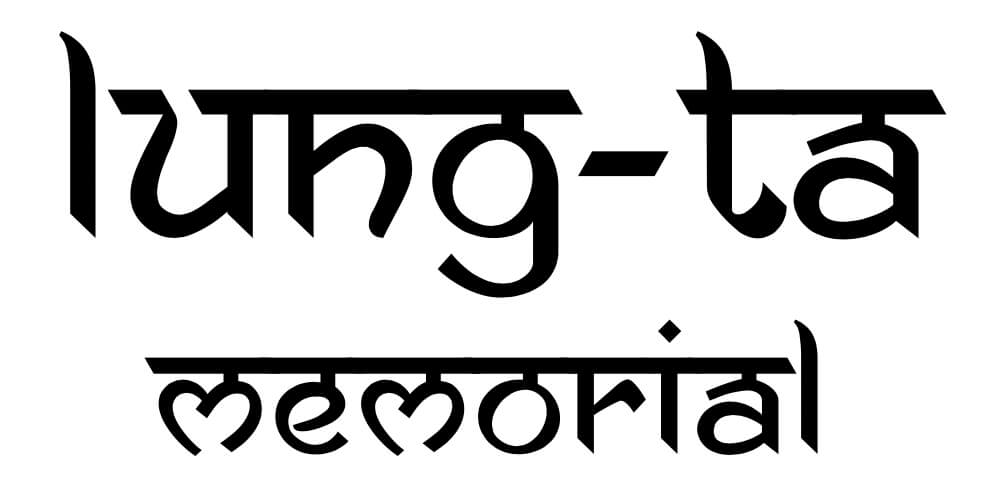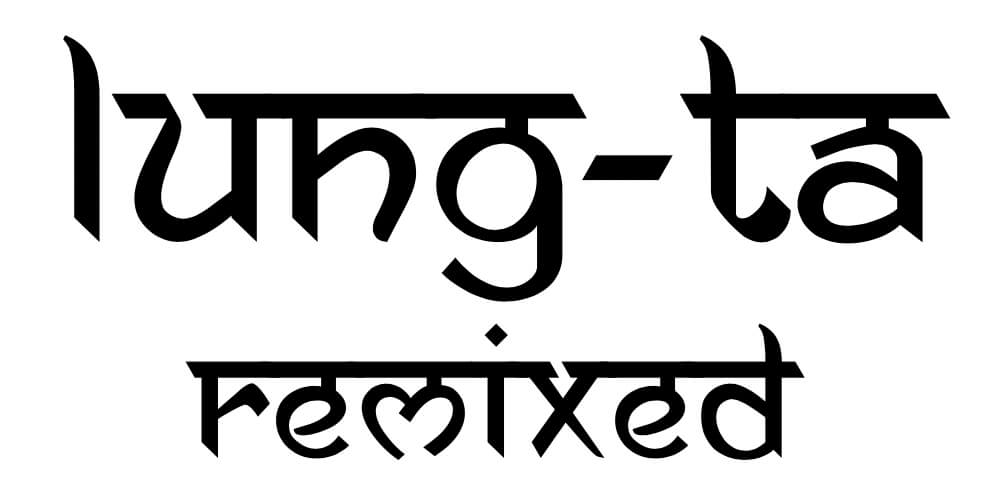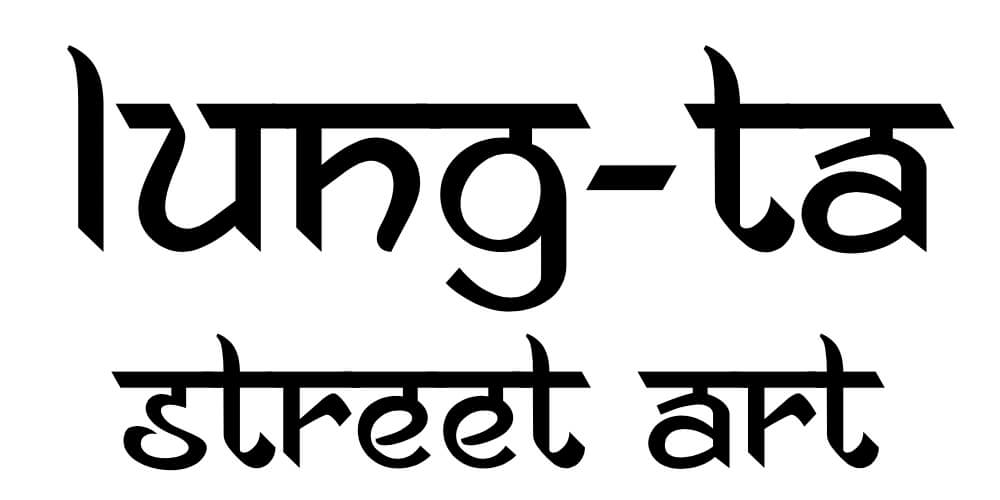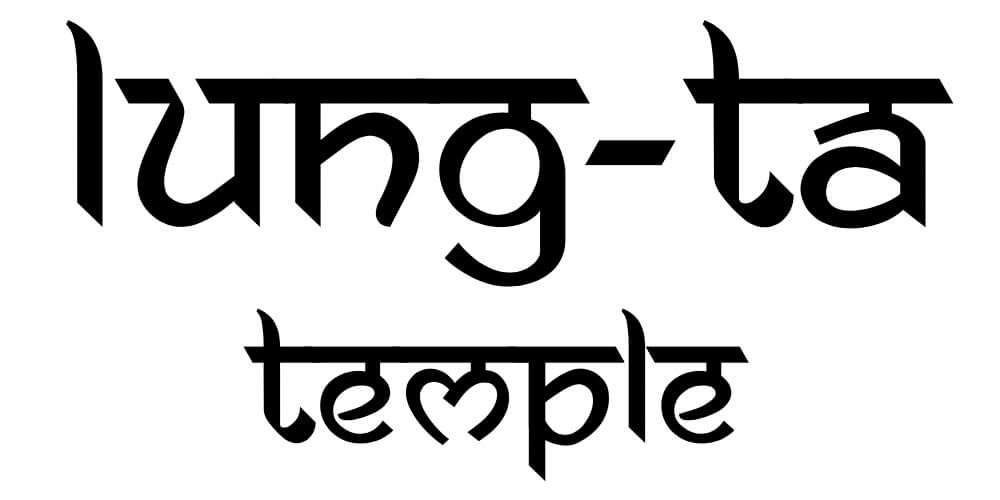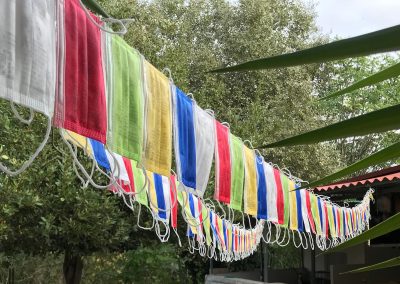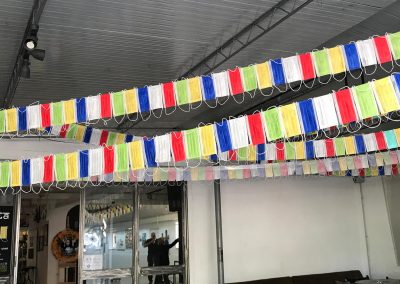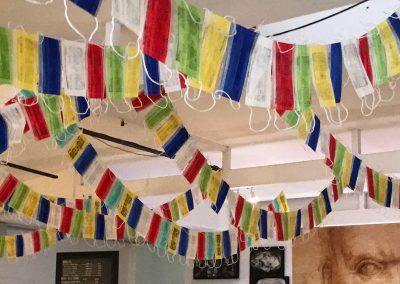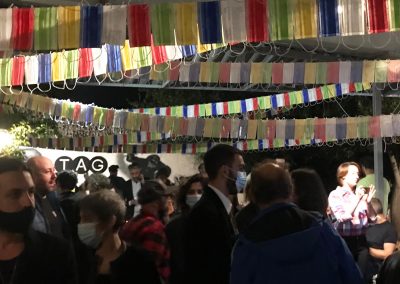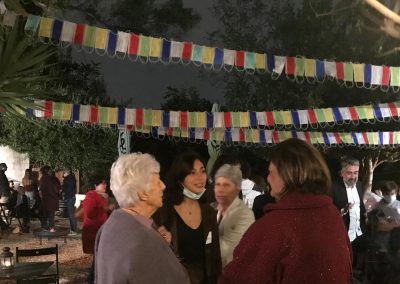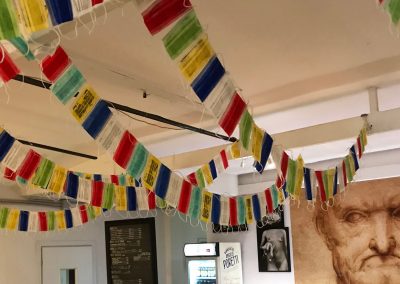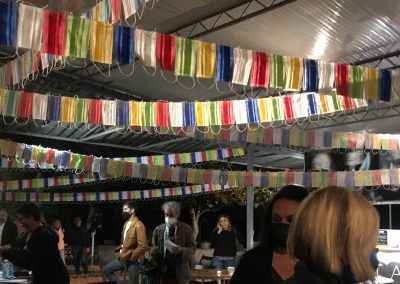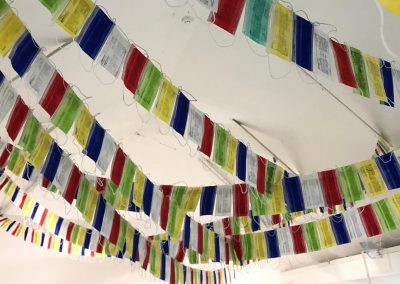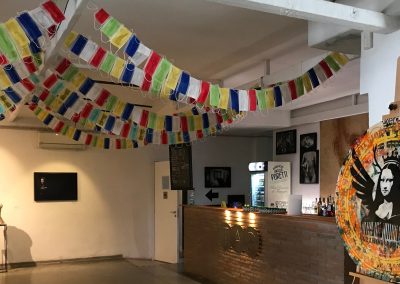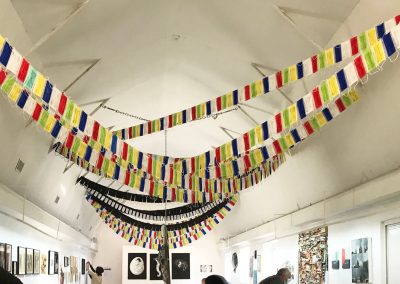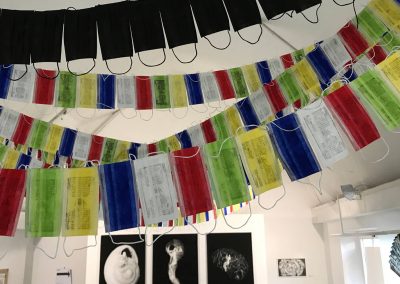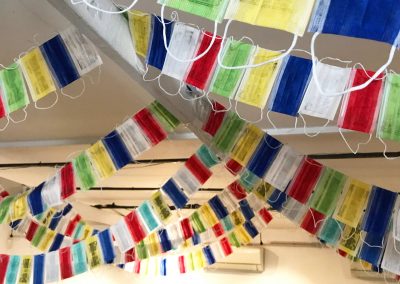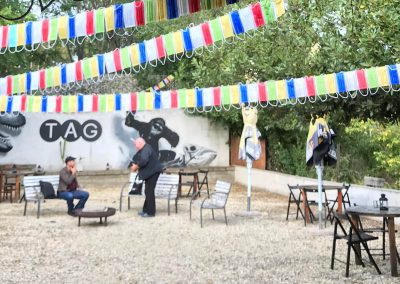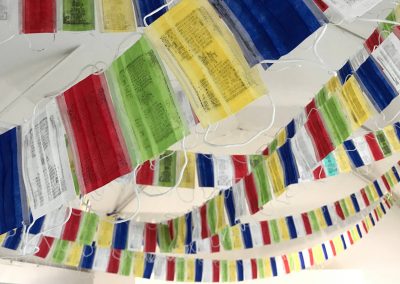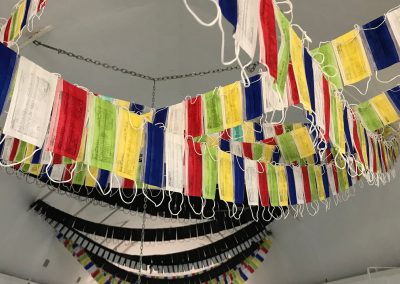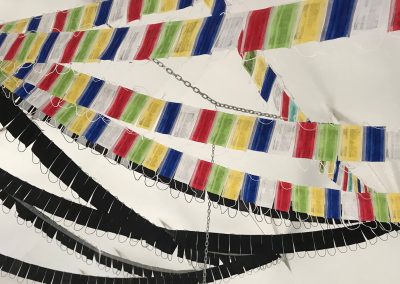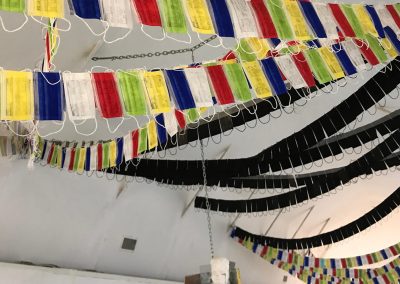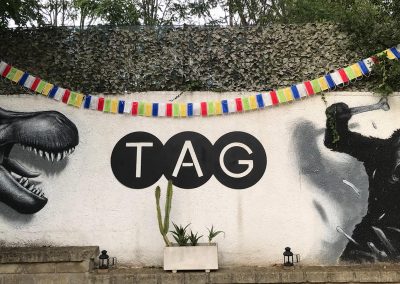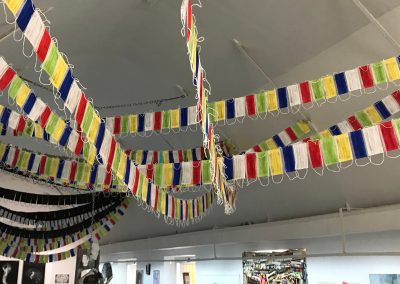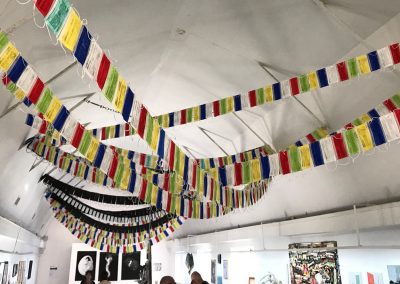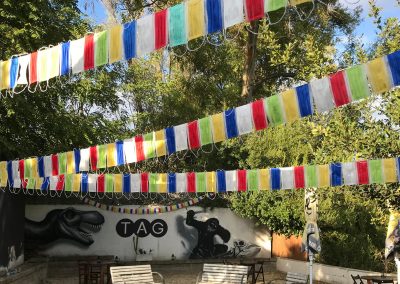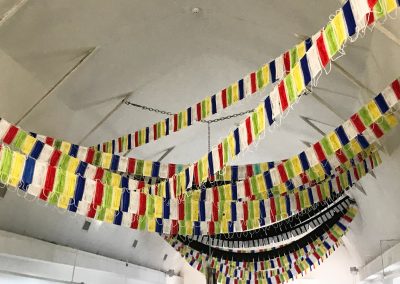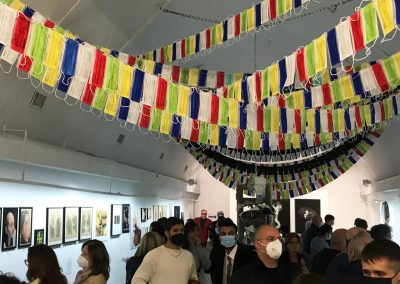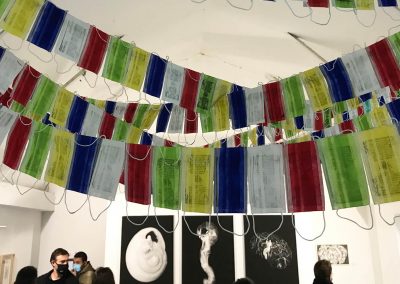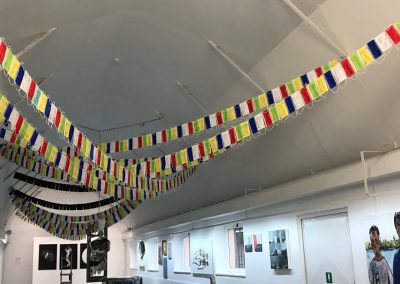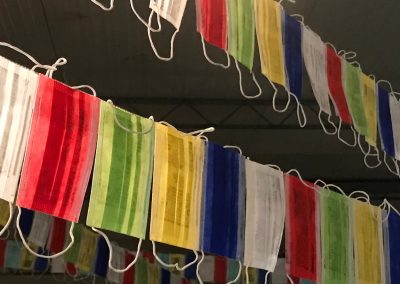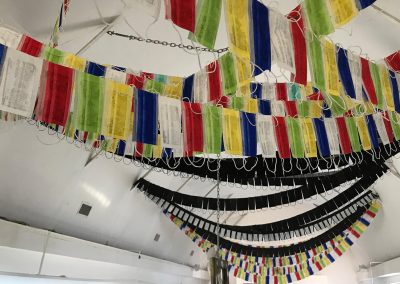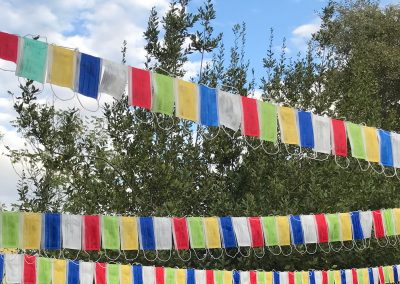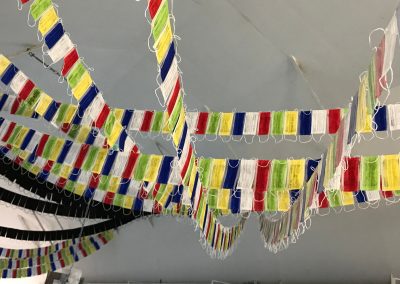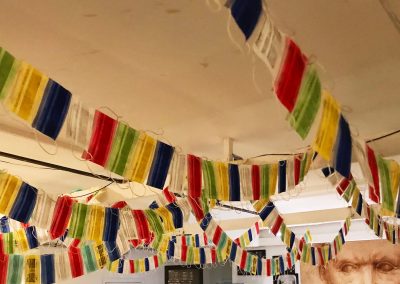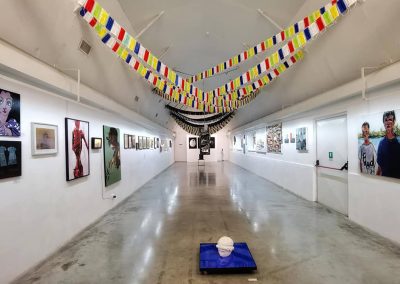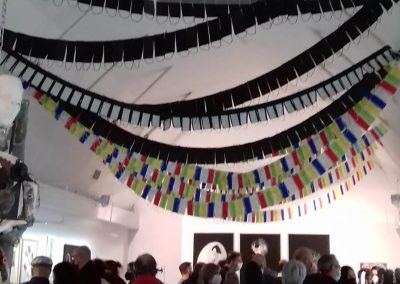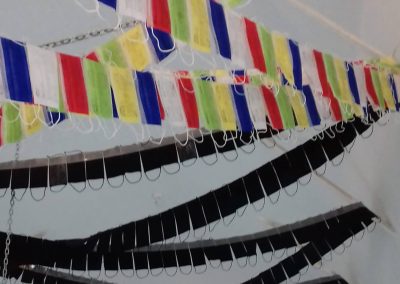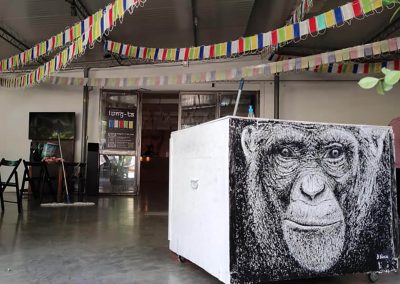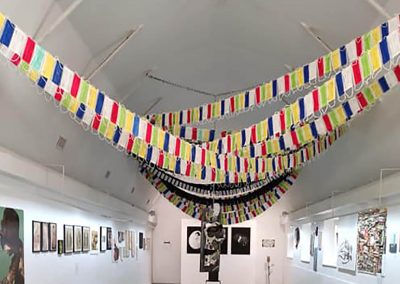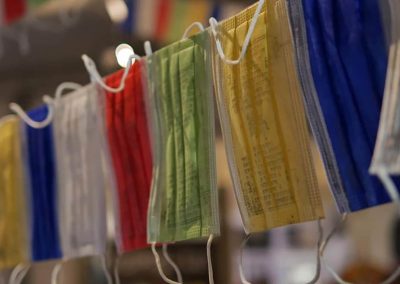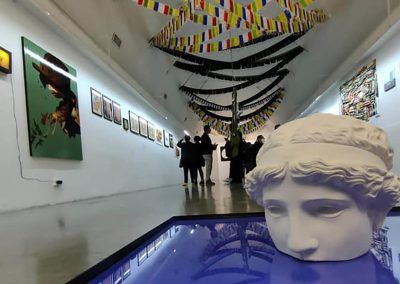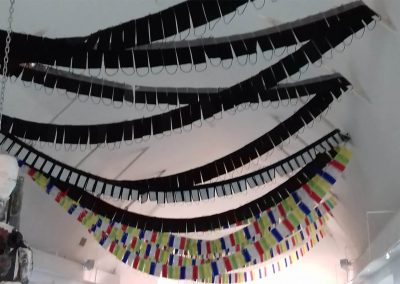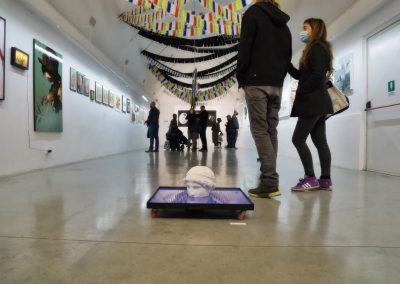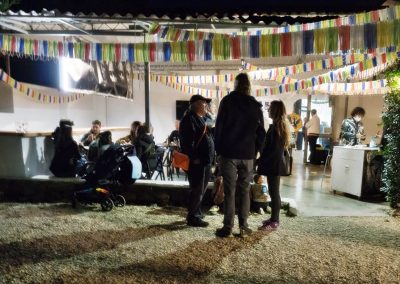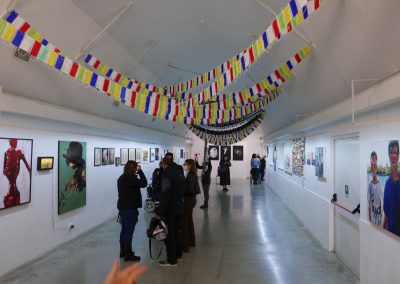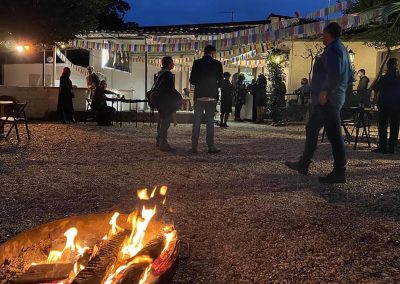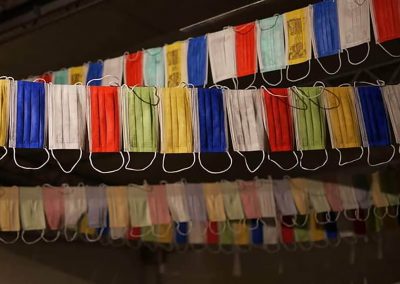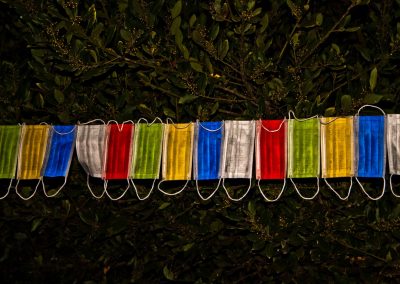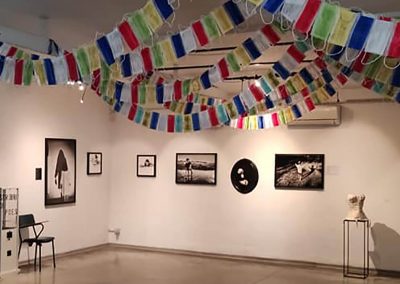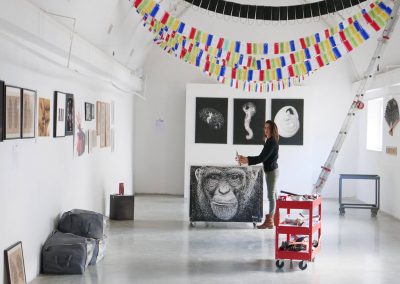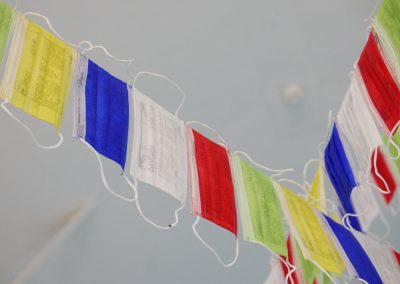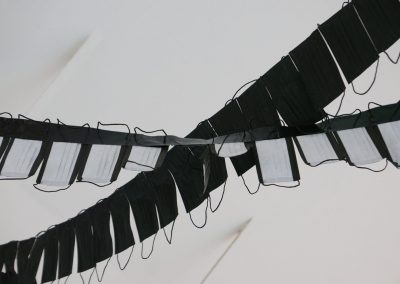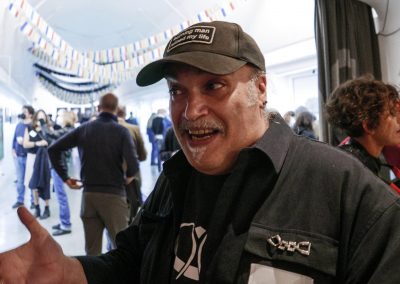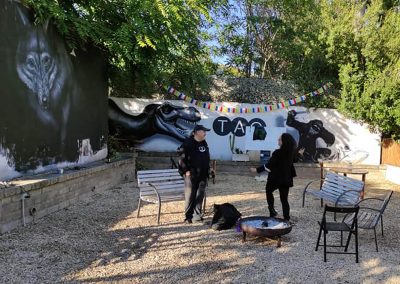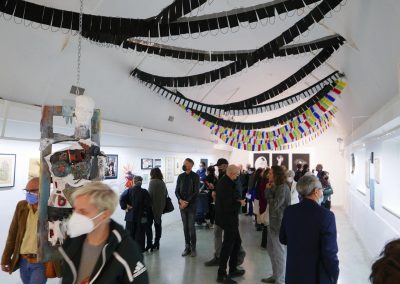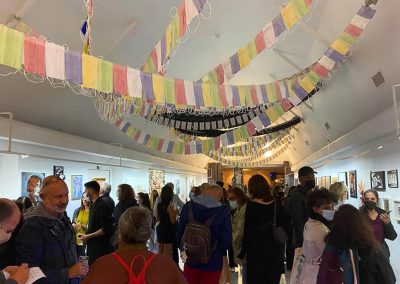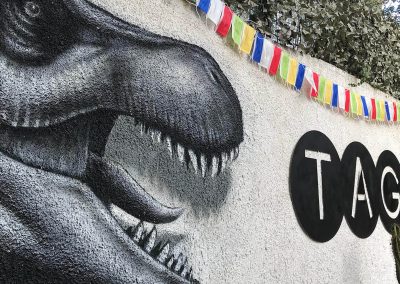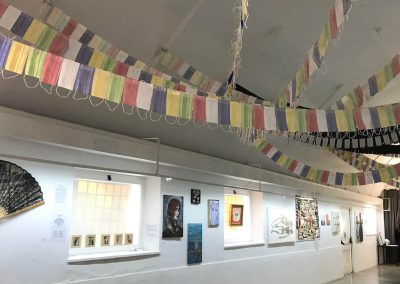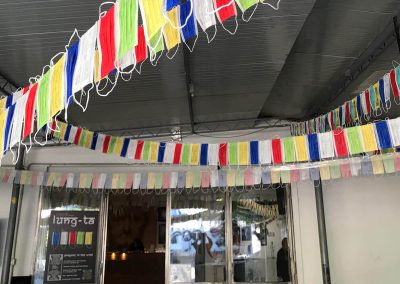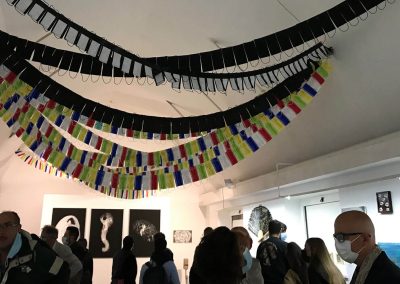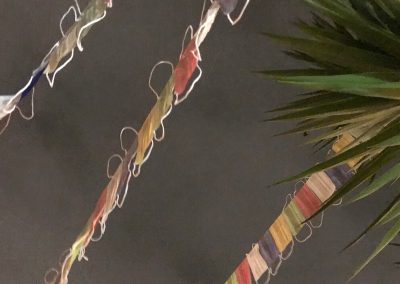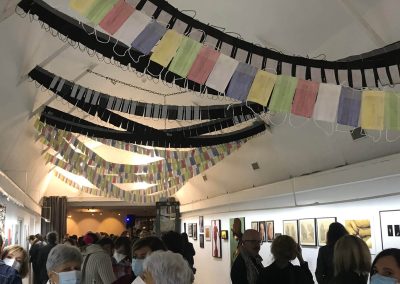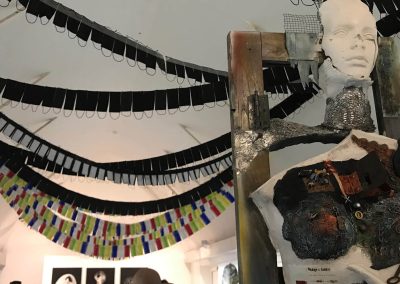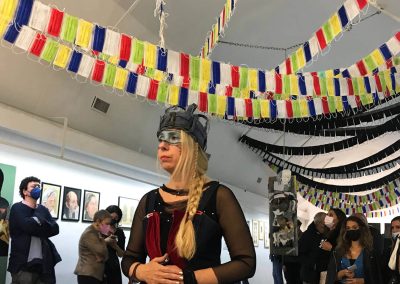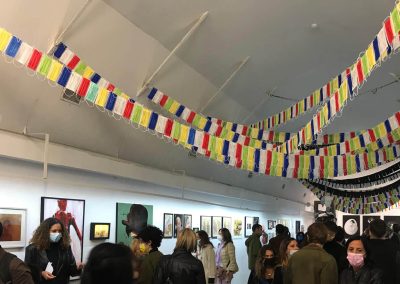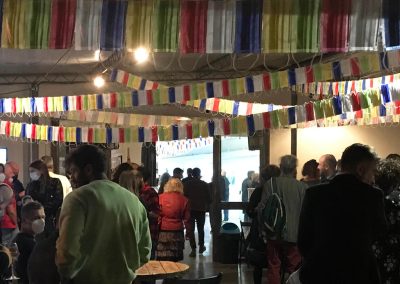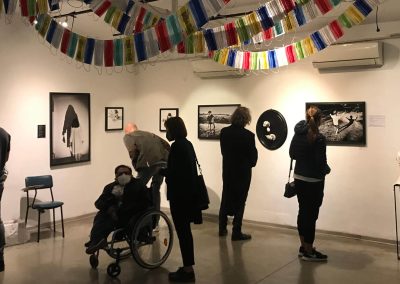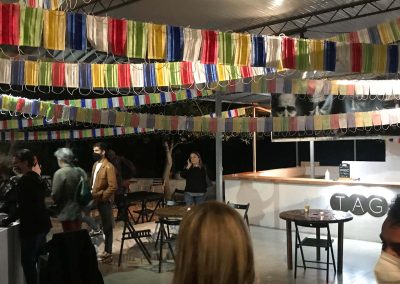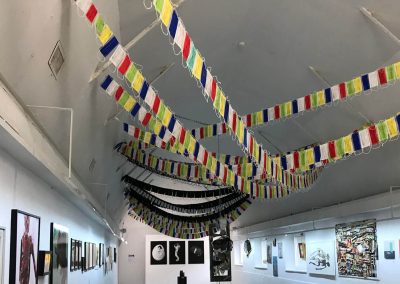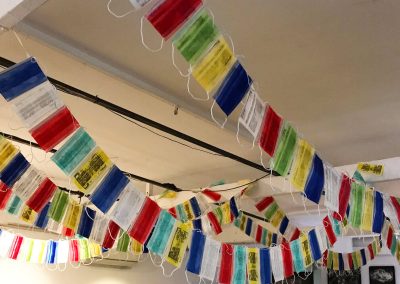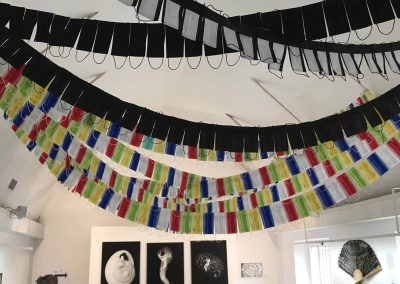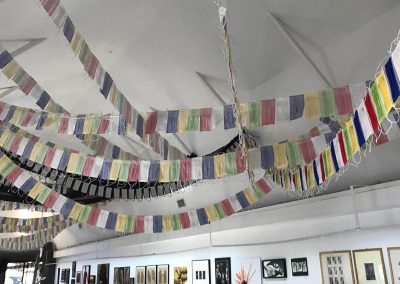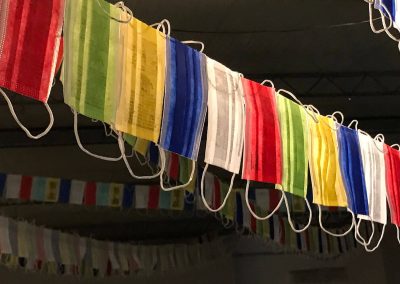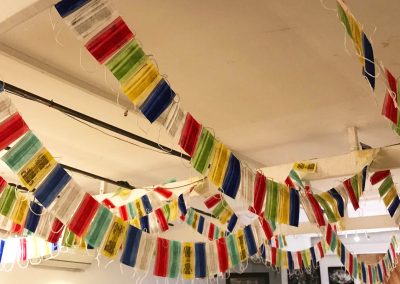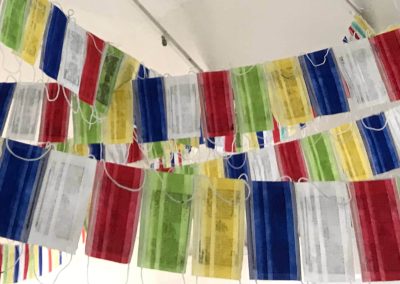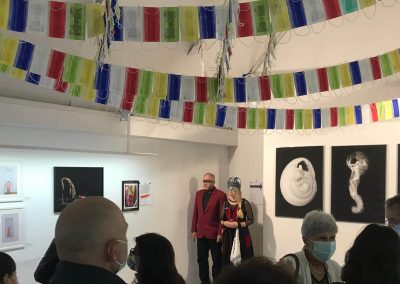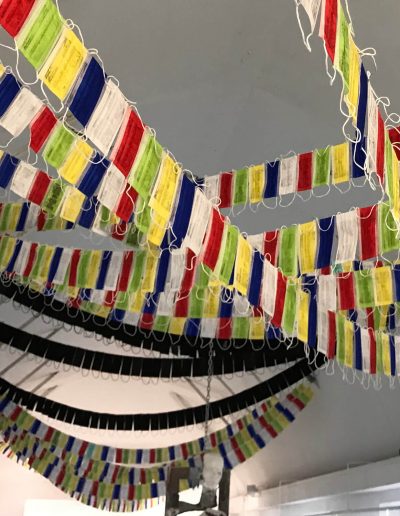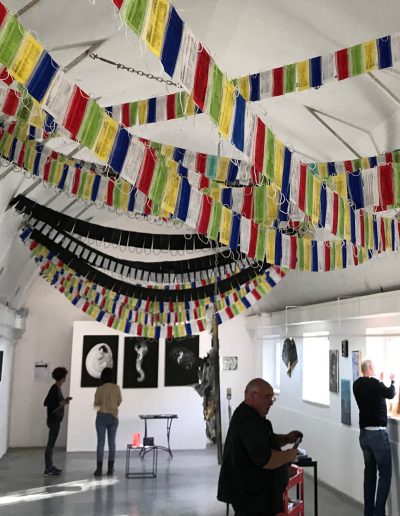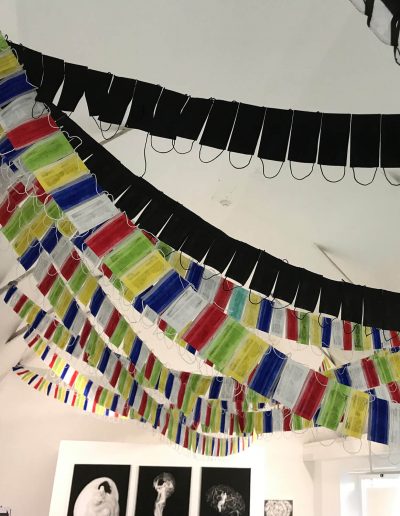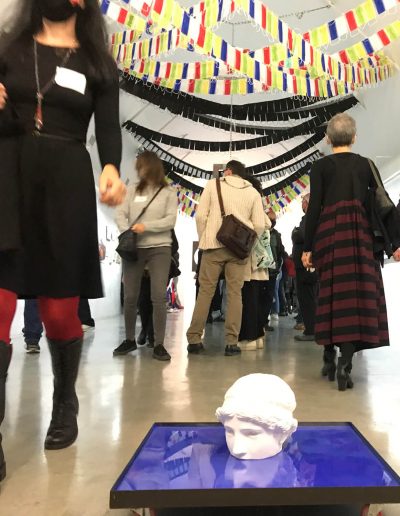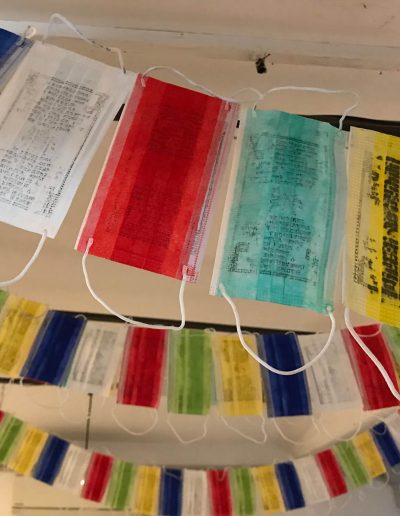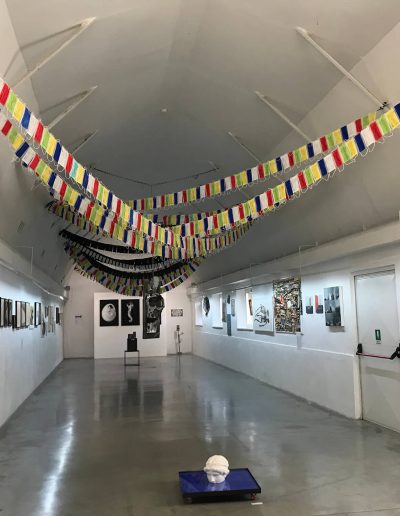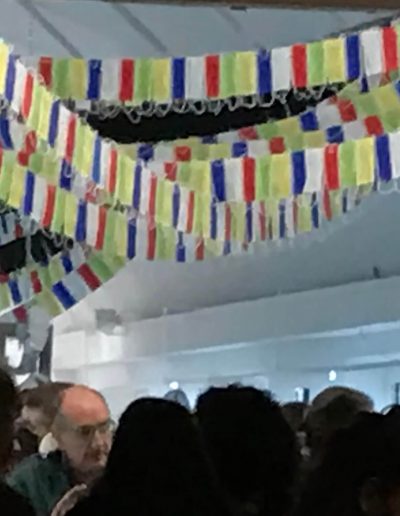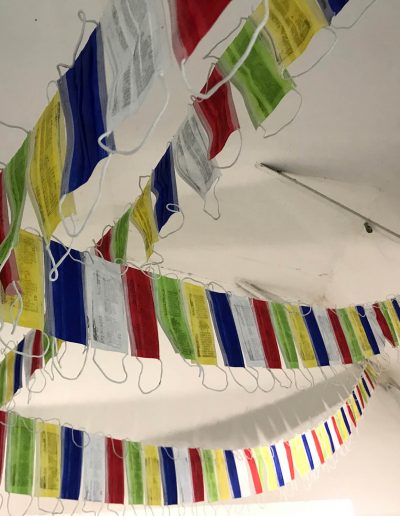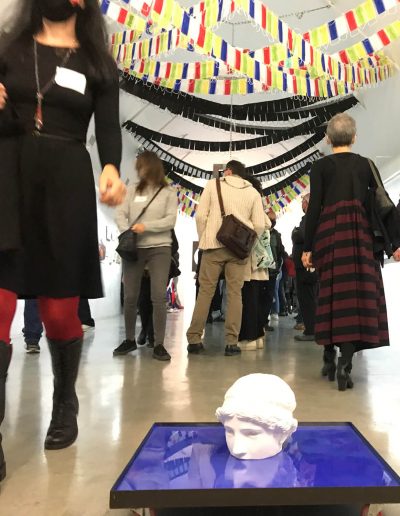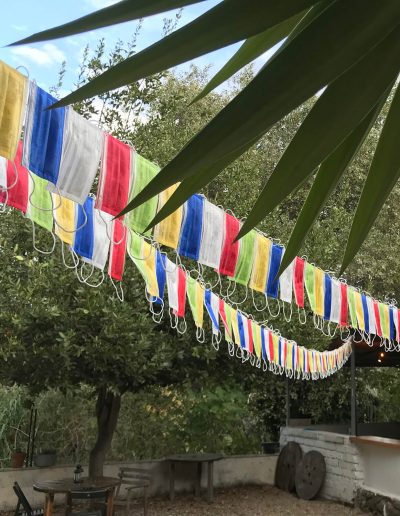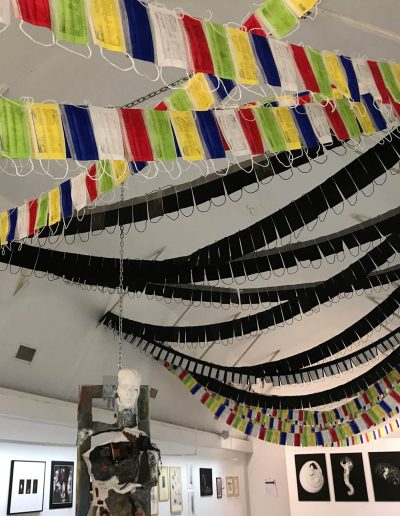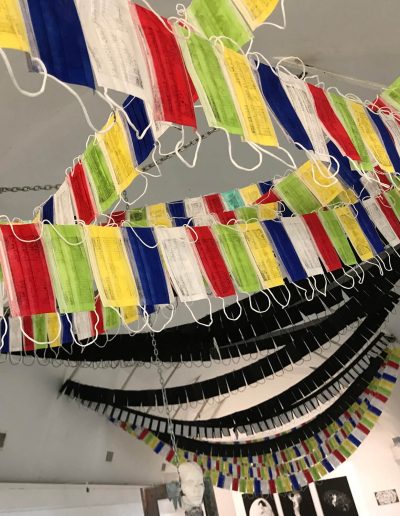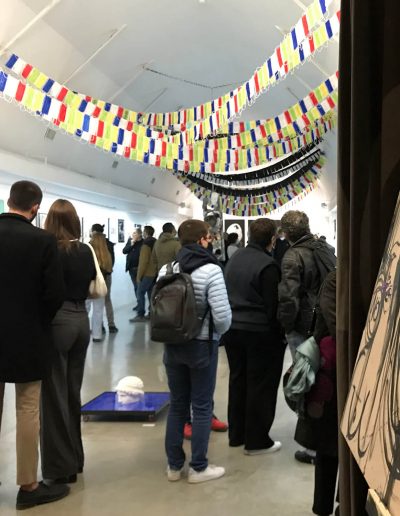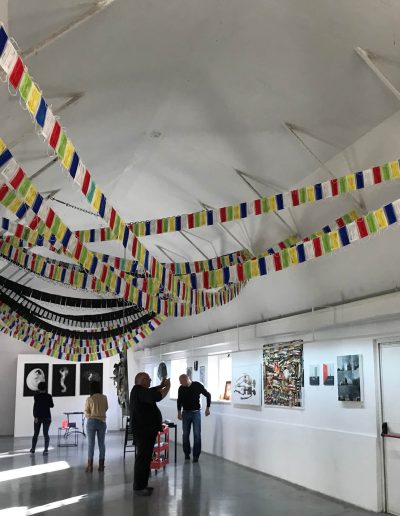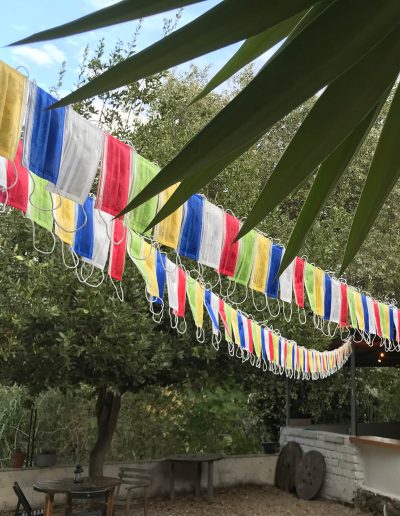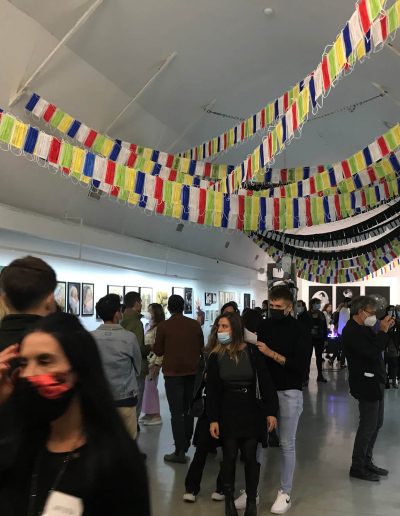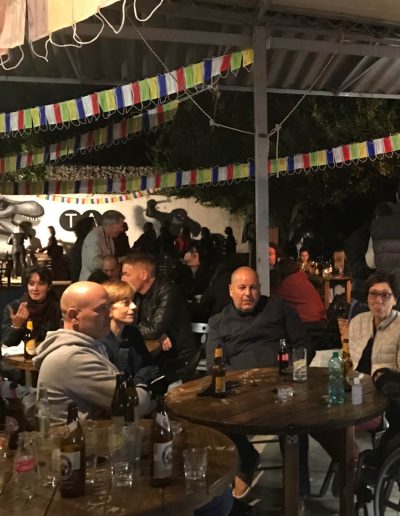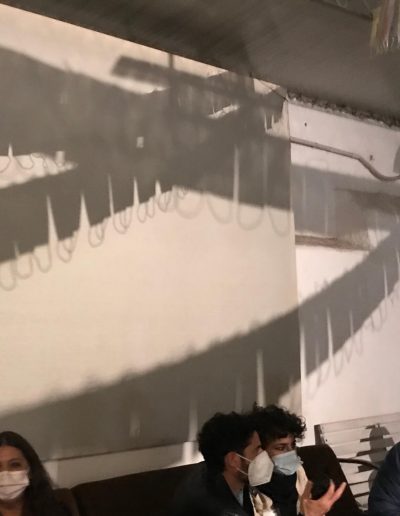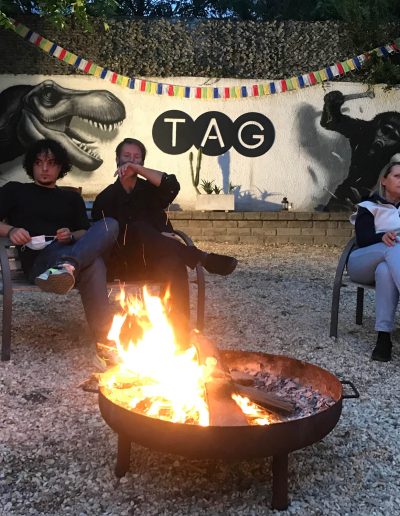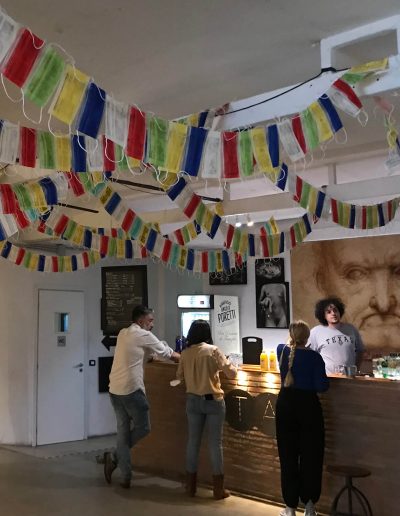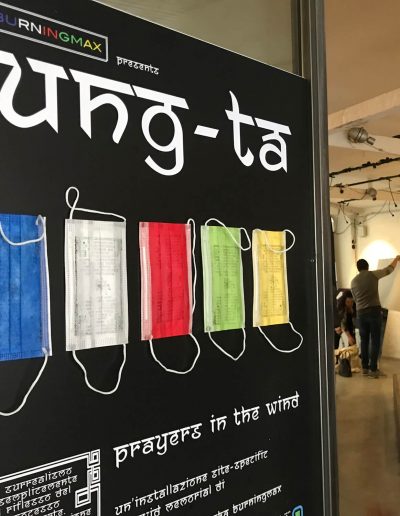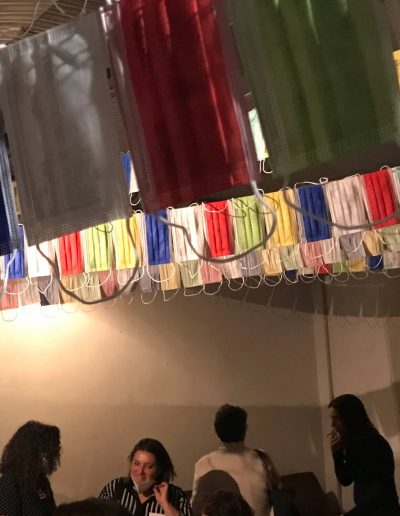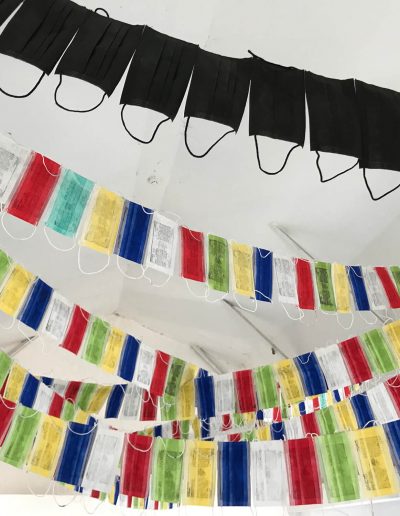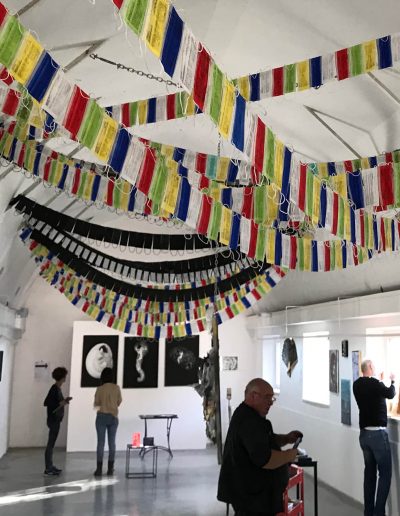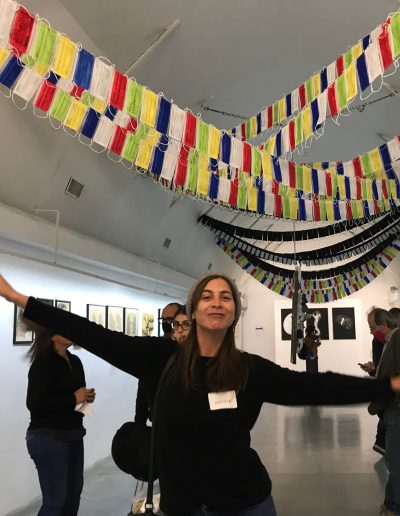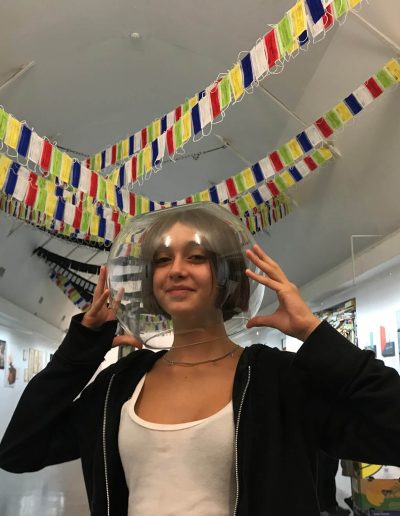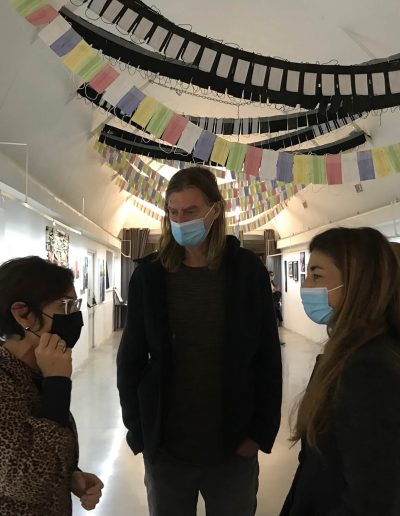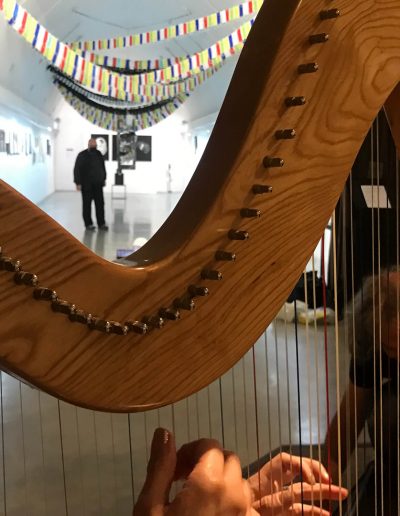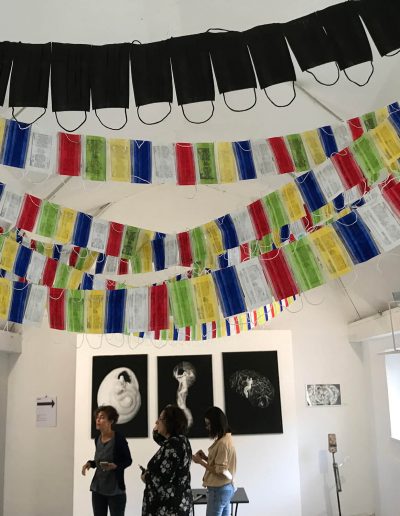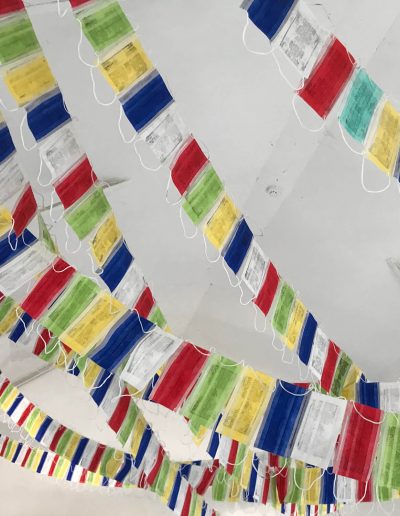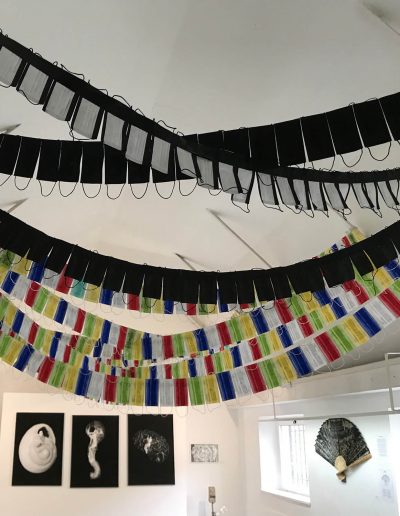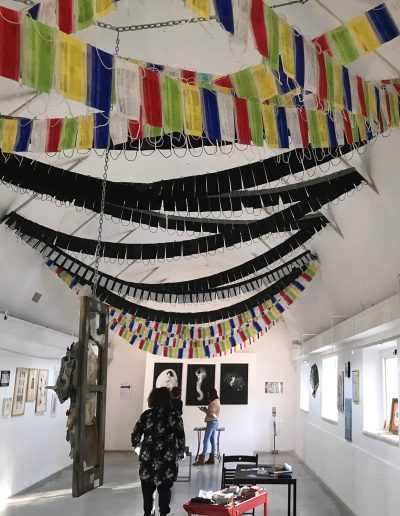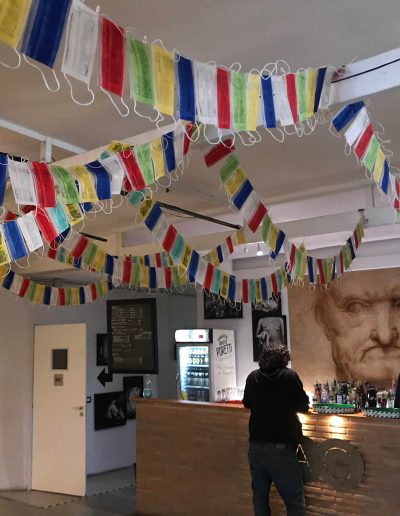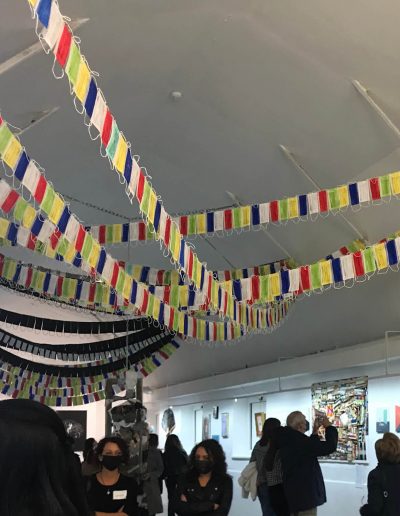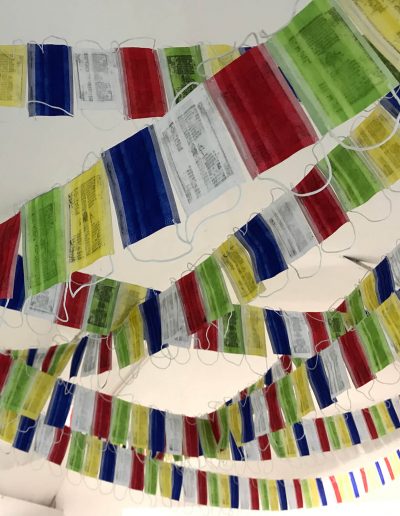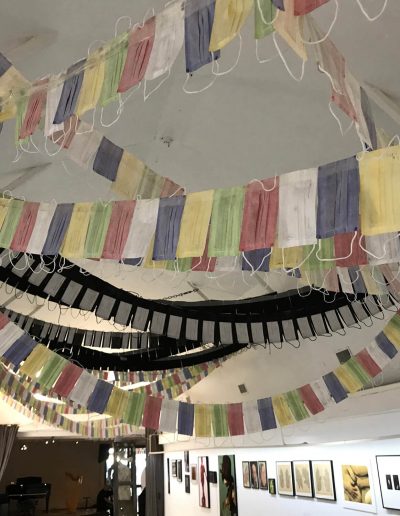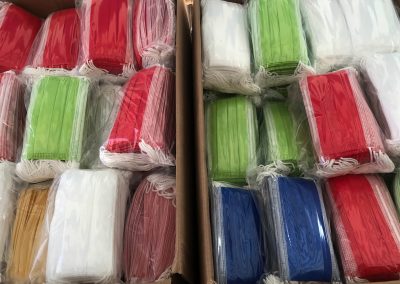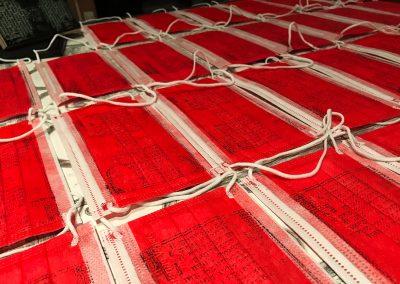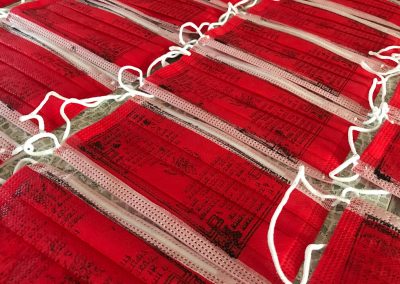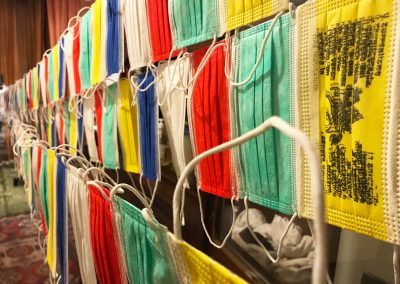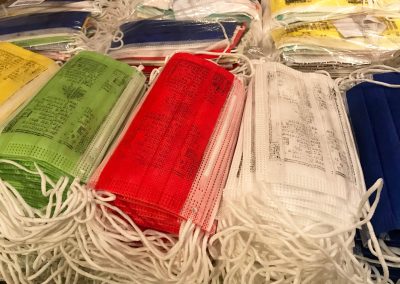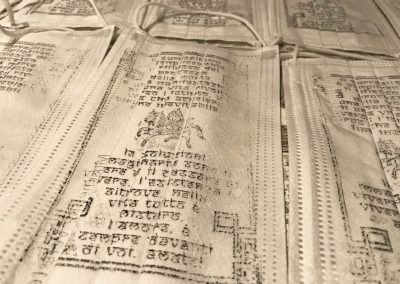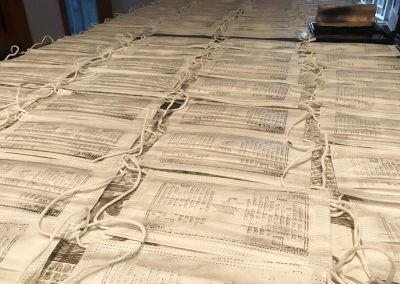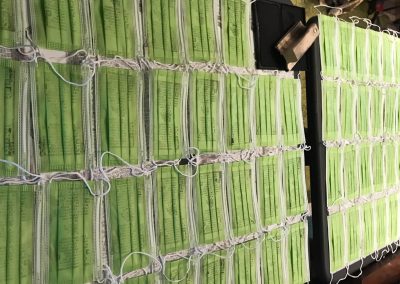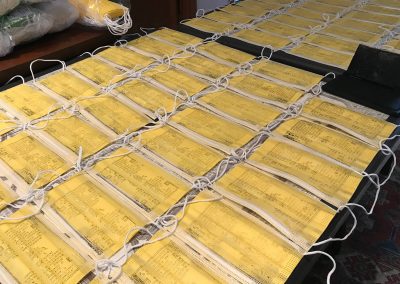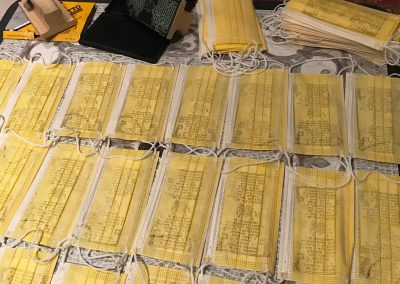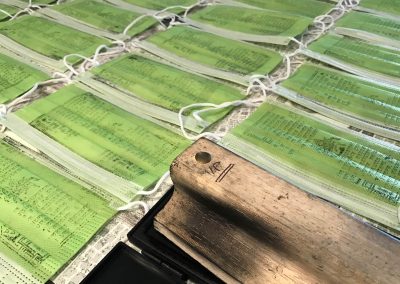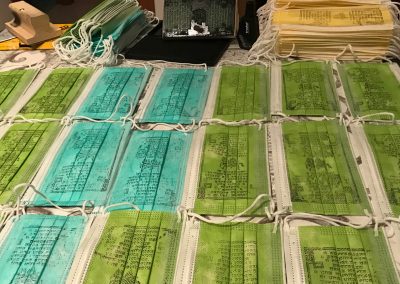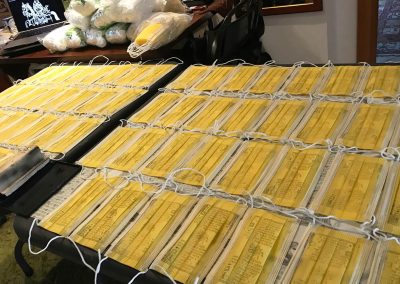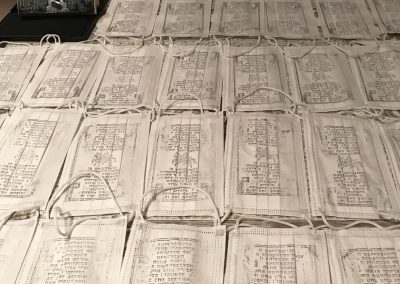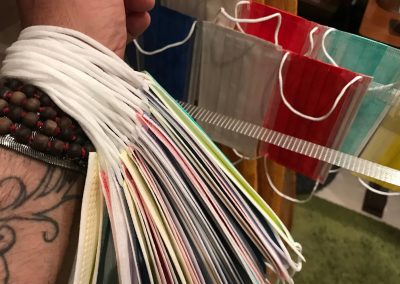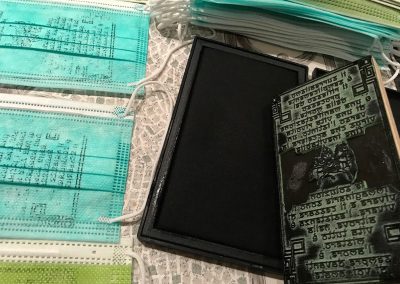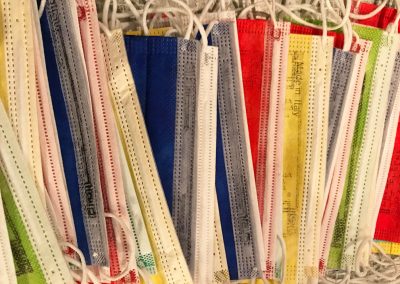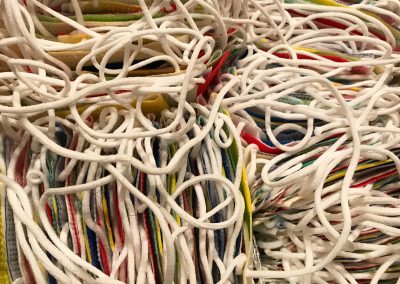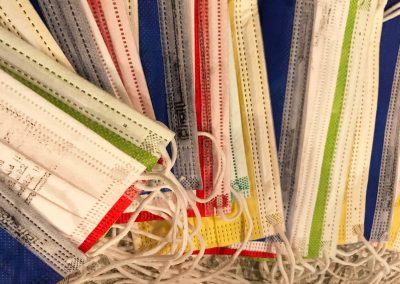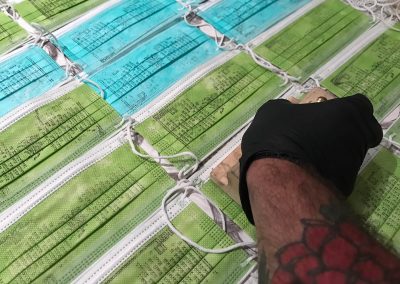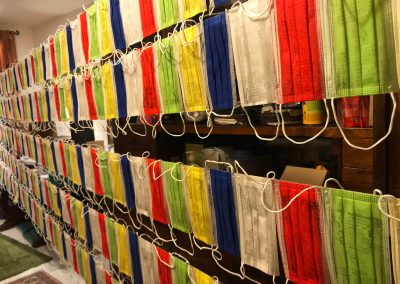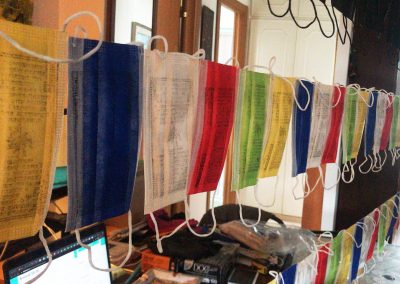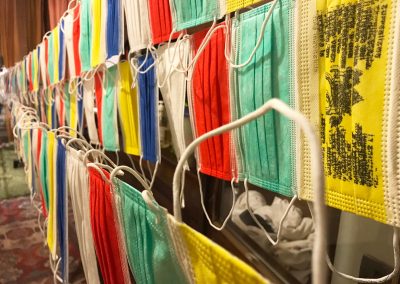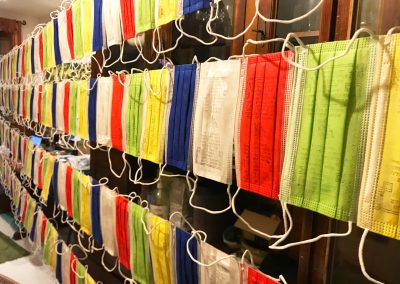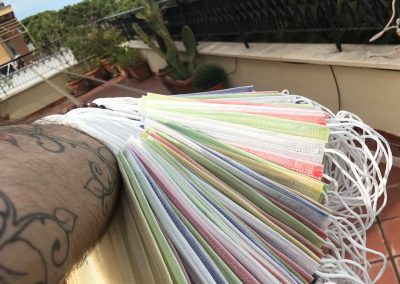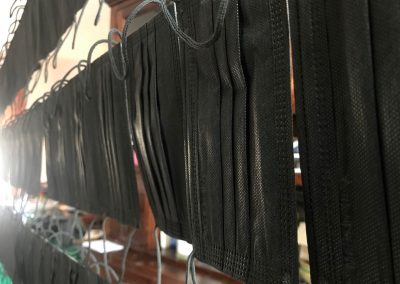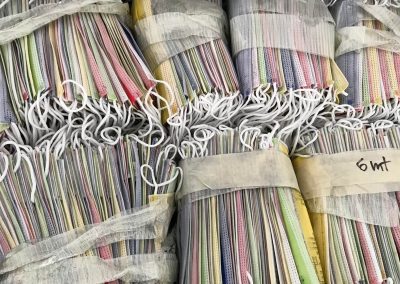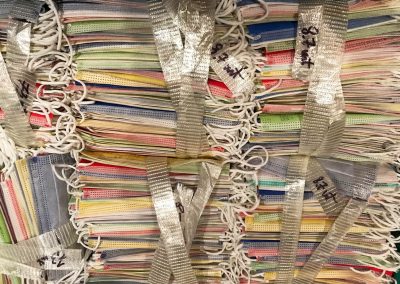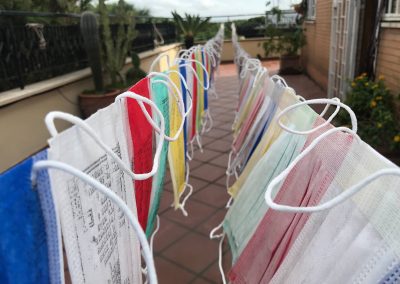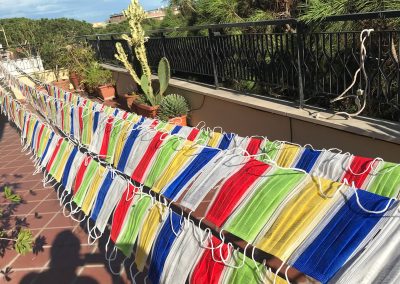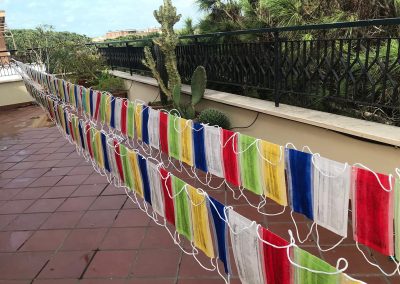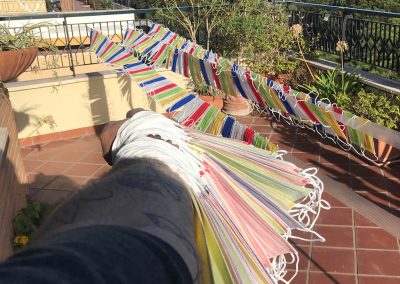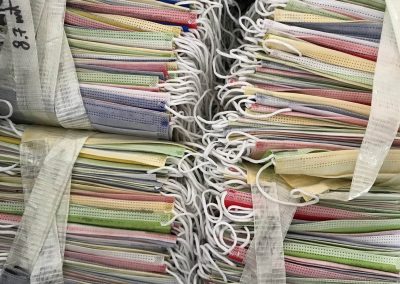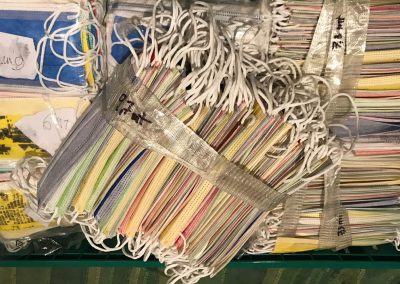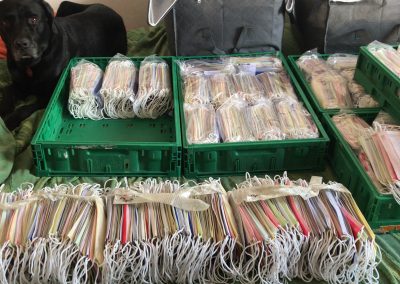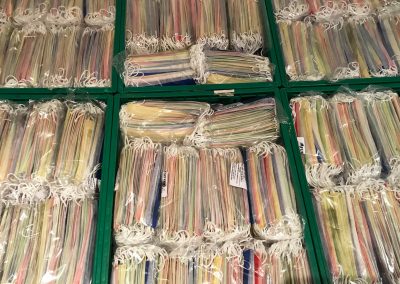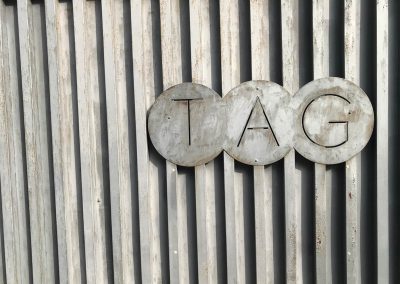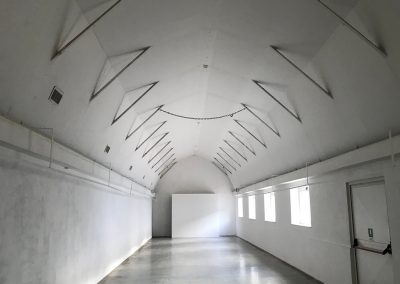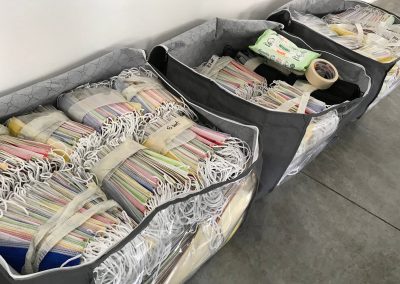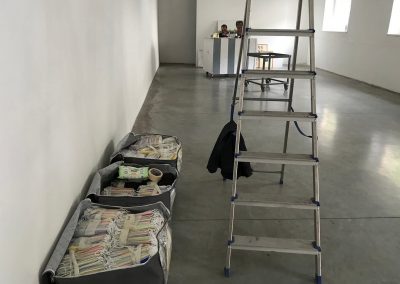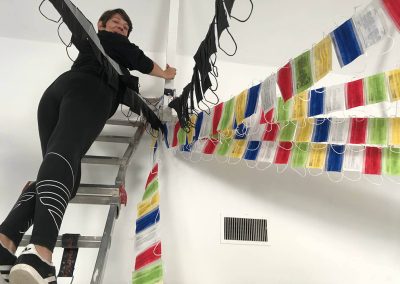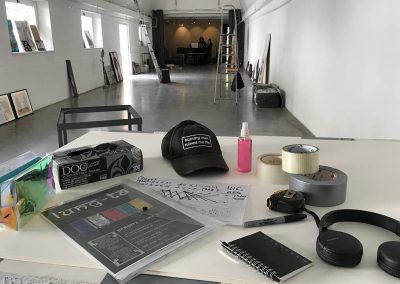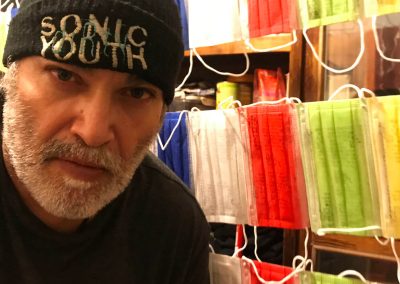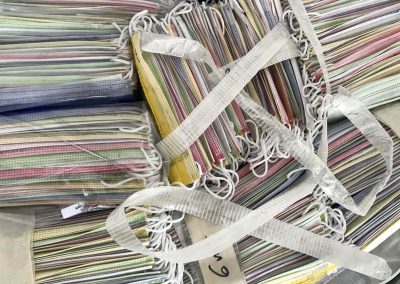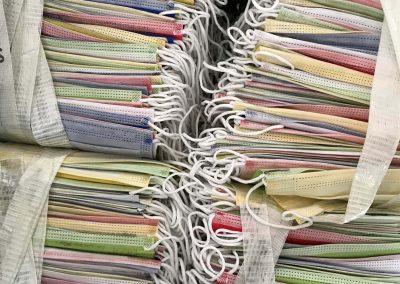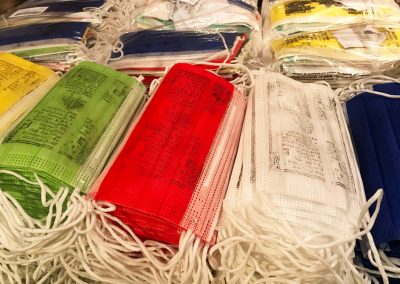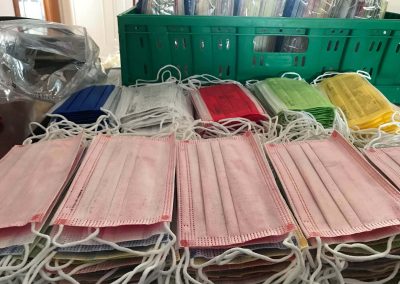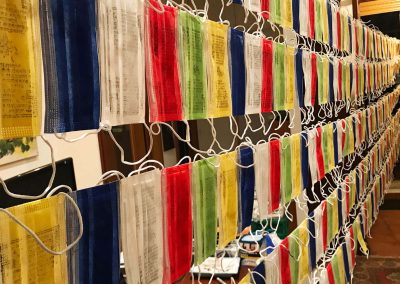
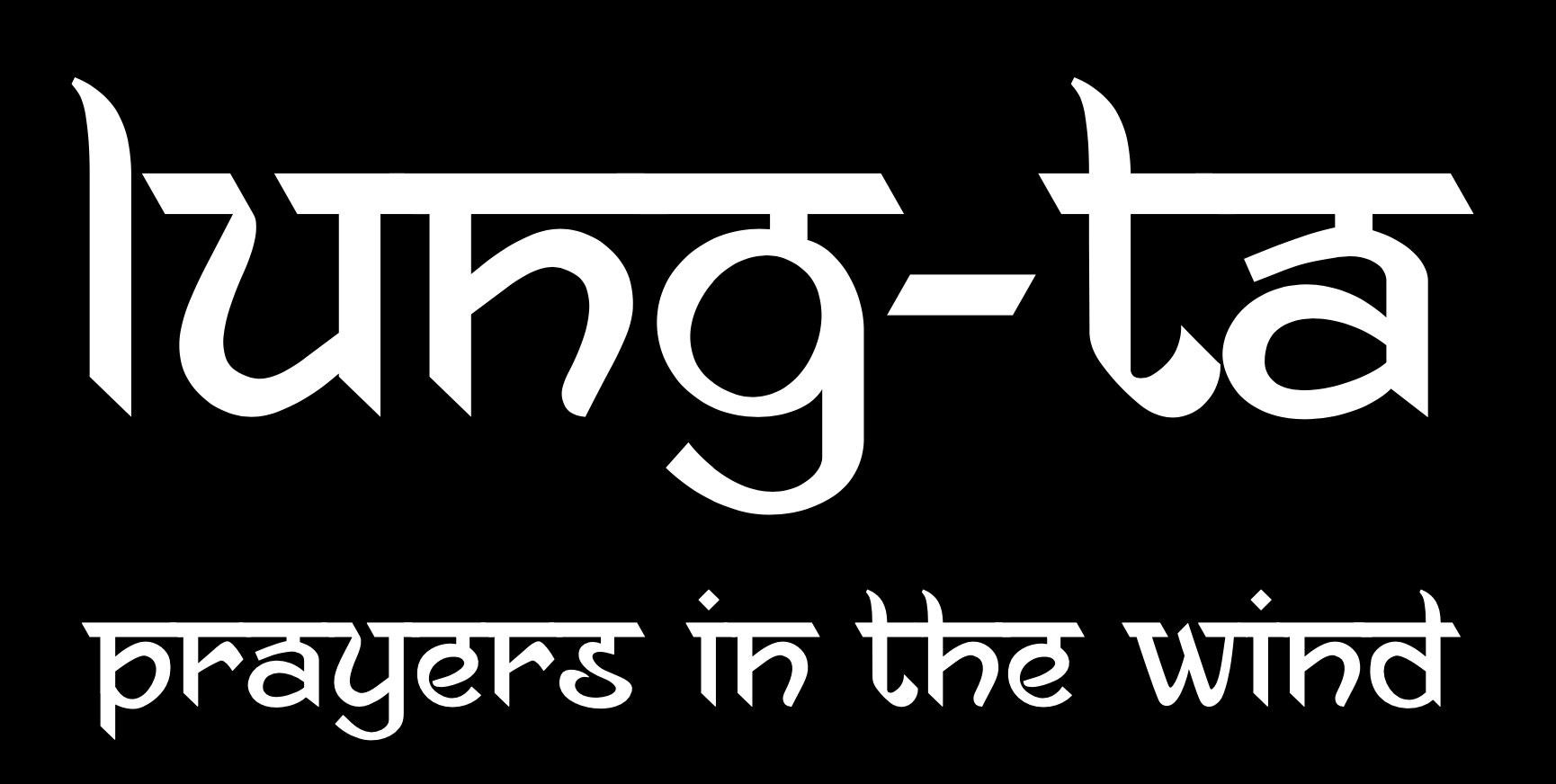

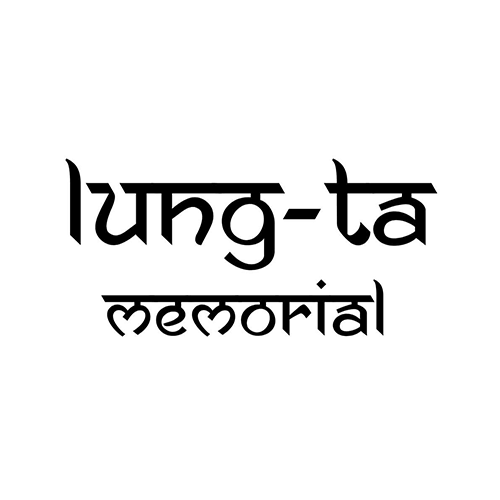
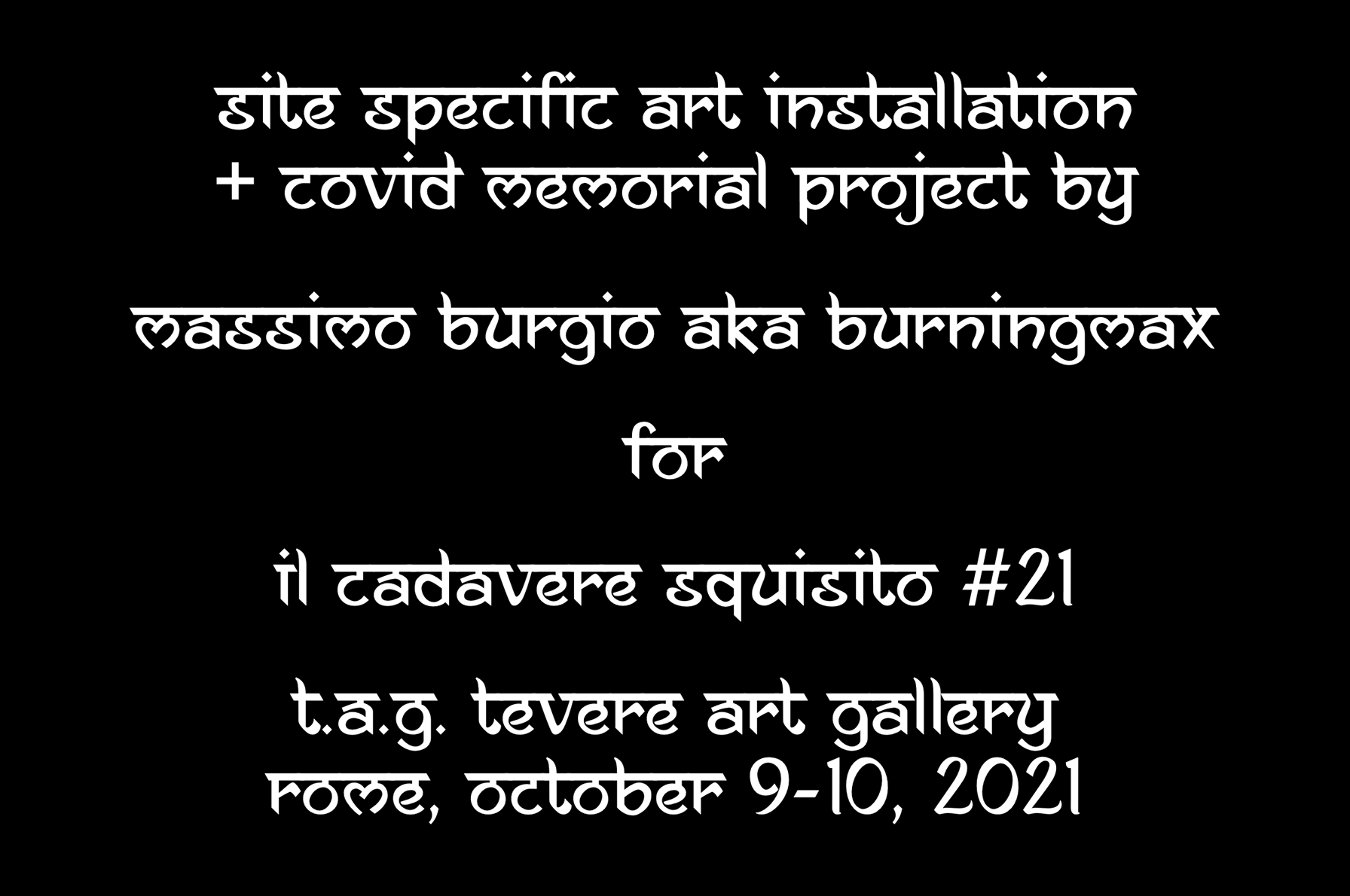

The LUNG-TA project is composed by 4 different variations of the art installation:
Lung-ta Memorial – main art installation, site-specific and covid memorial, created for the collective exhibition “Il Cadavere Squisito #21” at T.A.G. Gallery in Rome. Find all info about Lung-ta Memorial at this page.
Lung-ta Remixed – site-specific art installation created for the “Contact” event at Together Mansion in Roma, for Rome Art Week 2021. Find all info about Lung-ta Remixed at this link.
Lung-ta Street Art – several street art interventions at various locations around the city of Rome. Find all info about Lung-ta Street Art at this link.
Lung-ta Temple – temple / sacred space to be created in the desert of Los Monegros (Spain) for Nowhere 2022, official festival of the European Burning Man community. Find all info about Lung-ta Temple at this link.
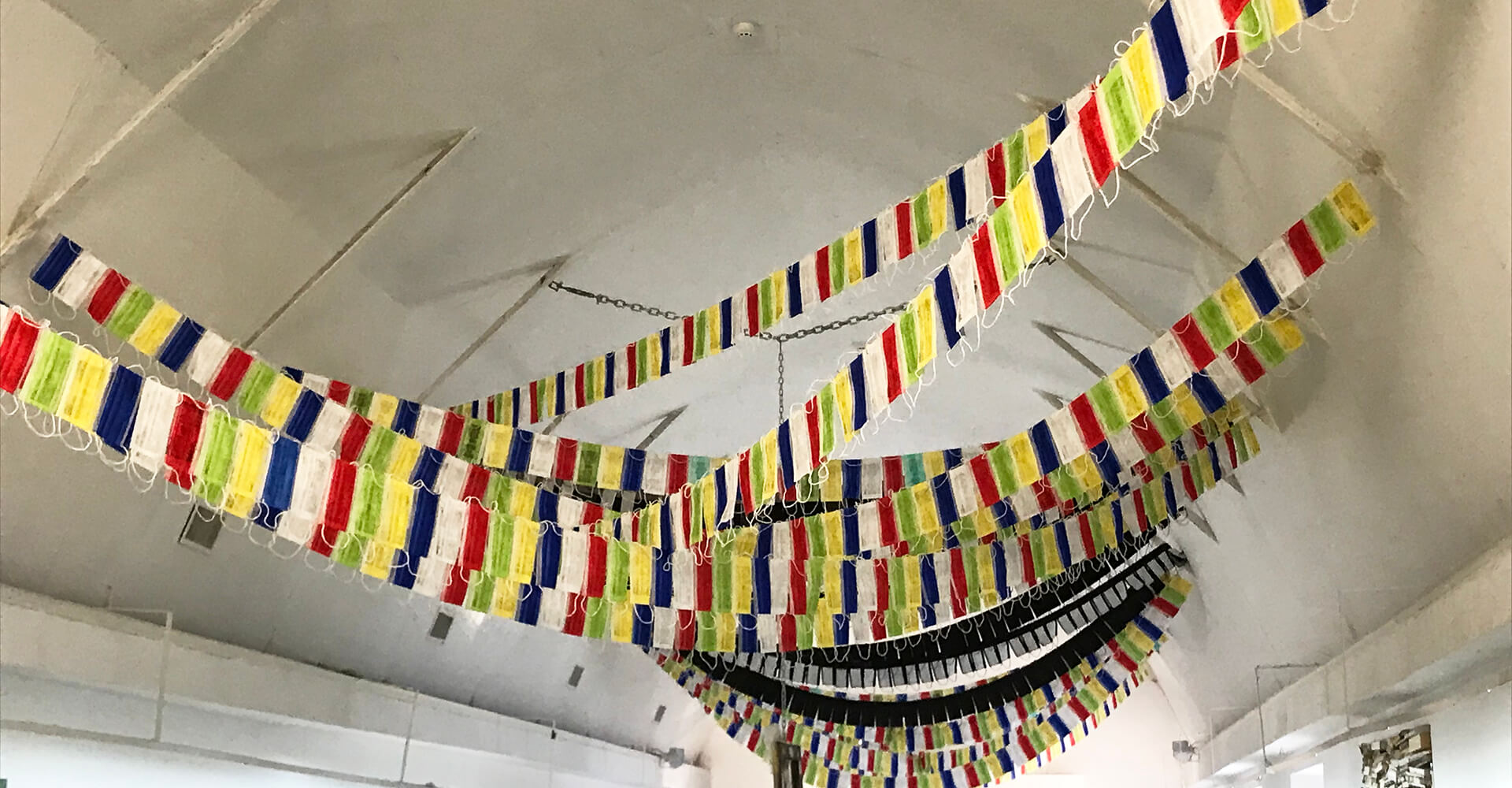

“Exquis cadavre” (exquisite corpse) was a “playful” approach to collective art for the Surrealists, just as it is for the curators of the cycle of collective exhibitions at the Tevere Art Gallery.
As I became aware of the call for artist for the 21st edition of the collective exhibition at T.A.G. I began to imagine playful ways of connecting my creative input to that of the other participants in the initiative.
Nevertheless, my first reflections started from the concept of “corpse” – and immediately my mind went straight to the “death bulletins” to which the covid pandemic has unfortunately accustomed us in the last year and a half.
And I had no more doubts: my project for T.A.G. couldn’t be a game, it had to he a reflection on death, and a memorial for the victims of the covid pandemic. Those “death numbers” in the bulletins that are actually people. People who are no longer here.
LUNG-TA is a site-specific art installation for the Tevere Art Gallery, but it’s also a memorial for the victims of the pandemic. LUNG-TA is a prayer, to be released in the wind in memory of the victims the covid pandemic did in the Metropolitan Area of Rome.
“Nothing is exquisite about real death.” // Massimo Burgio aka Burningmax // Rome, 14 September 2021


According to Tibetan Buddhism, the mantras contained on the flags are spread by the wind, and good intentions and compassion pervade the space around them, benefiting everyone. By hanging the flags in a high place, the blessing of the lungs is brought to all beings.
When the wind passes over the surface of the lungs, the air is purified and made sacred by mantras. Prayers on flags become a permanent part of the universe, while the image fades due to exposure to the elements.
Just as life goes on and is replaced by new life, Tibetans renew their hopes for the world by continuing to hang new flags alongside the old ones. A symbolic act of welcoming the changes in life and the recognition that every being is part of a larger circle.
In compliance with the format of Il Cadavere Squisito, the LUNG-TA installation intends to extend the benefits of prayers, compassion and good intentions to all those who pass under the installation: the other participating artists, their works, the public, and the physical spaces of the Tevere Art Gallery.
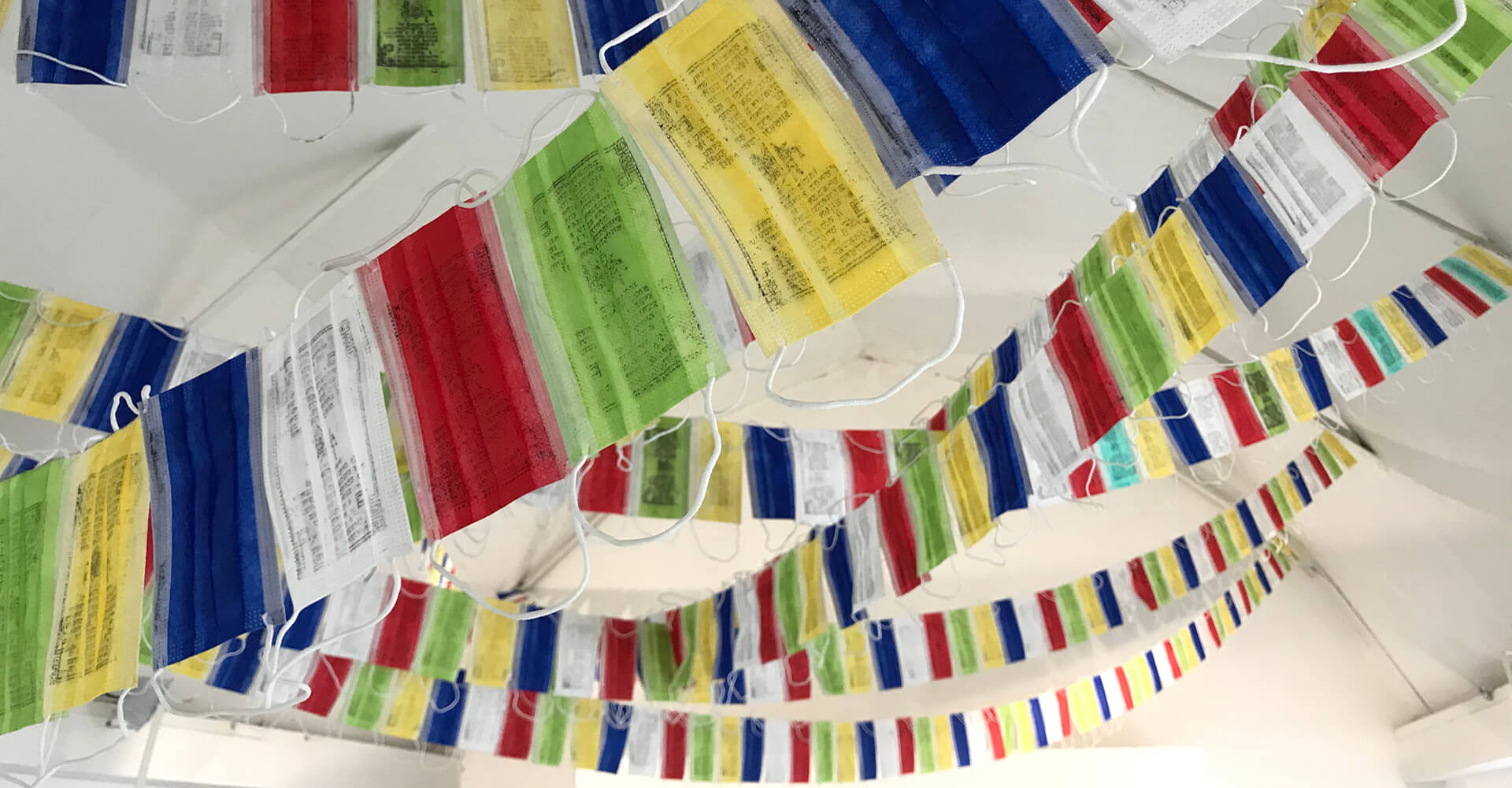

In Tibetan Buddhism the wind horse is a pivotal element in the center of the four animals that symbolize the cardinal directions, and is a symbol of the idea of well-being or luck.
Prayer flags in the Tibetan Buddhist tradition are tied in sets of five, each a different color. The colors are arranged from left to right in a specific order: blue, white, red, green and yellow.
The colors represent the five elements and the 5 directions, while different elements, purposes and sadhanas are associated with mantras.
In consideration of the fact that the mantras of the lung-ta have been “westernized”, the installation has integrated, in addition to the rows of flags with traditional Tibetan colors, also some central rows of black flags / masks, as a Western expression of mourning.
Blue: sky and space / north
White: air / south
Red: fire / east
Green: water / west
Yellow: ground / center
Black: grief / mourning
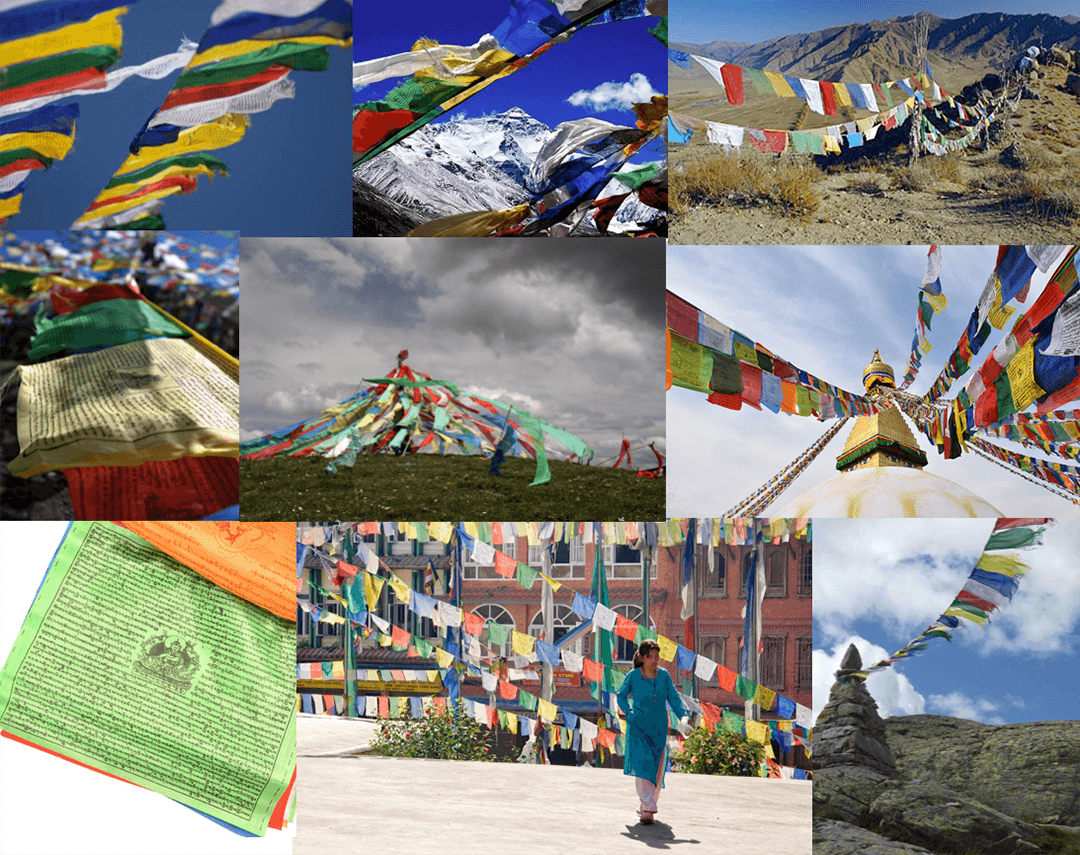


LUNG-TA is an art project, but it is also a memorial. Consequently, in addition to the conceptual, formal and aesthetic aspects, it is important for the project to maintain a profile anchored to spirituality, even if understood in a surrealist, or burner, form. And not only for the Buddhist inspiration on which the project is based.
Burning Man creativity often “plays” with the principle of “fuckery“, an approach that can be found in various circles and movements of contemporary art, starting with the Surrealists themselves, and then again in the artistic and cultural movements that gave birth to Beat Generation, Fluxus, Pop-Art, up to the Cacophony Society that created in San Francisco the foundations for the birth and development of the Burning Man culture.
But the fuckery of Burning Man, like that of the Surrealists, hides a conceptual stratification with deep roots, with different levels of interpretation and interaction that are often anchored in solid philosophical and even spiritual foundations. Just think of the “pagan” ritual of the man who burns, to be reborn from his own ashes like a phoenix. Or to the experience poised between the architectural marvel and the miseries of the human soul represented by the Temple culture in Black Rock City and other temporary autonomy zones and burners gathering around the world.
The LUNG-TA project is a tribute inspired by all these experiences between serious and playful aspects, between joyful fuckery and spiritual solemnity. The prayer flags made with surgical medical masks maintain the original spirit of the Tibetan Buddhist tradition, but at the same time transmit a mantra that escapes spiritual rigor, to find depth of intent even in the fuckery spirit of the Surrealist artists, to whom Il cadavere Squisito is inspired.
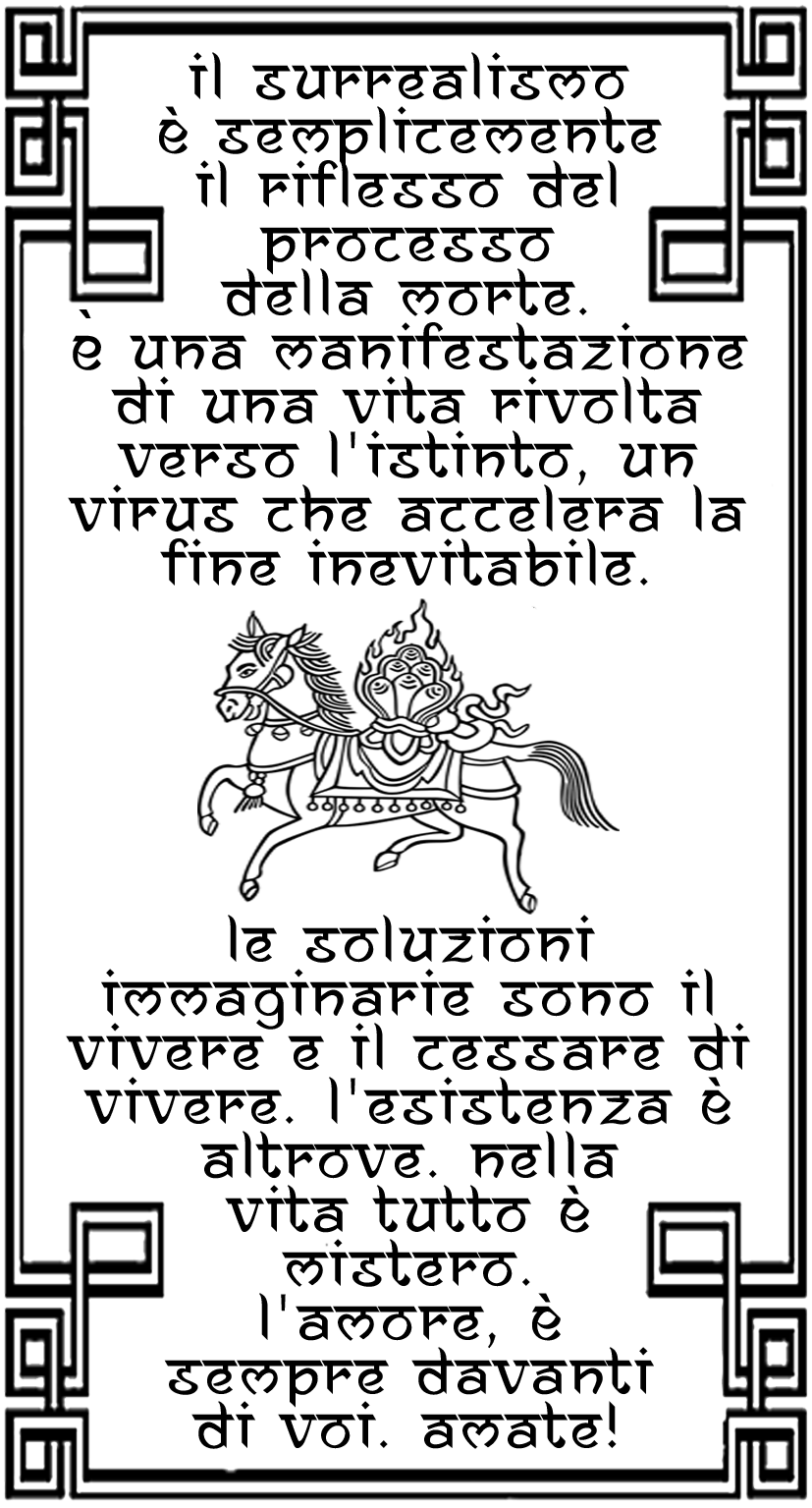
The “surrealist mantra” is written in Italian, but with characters that refer to the Sanskrit alphabet. These are the quotes selected for the lung-ta:
Surrealism is simply a reflection of the process of death. It is a manifestation of a life turned towards instinct, a virus that accelerates the inevitable end.
(Henry Miller)
Living and ceasing to live are imaginary solutions. Existence is elsewhere.
(Andre Breton)
Everything is mystery in life.
(Rene Magritte)
Love is always in front of you. Love!
(Andre Breton)
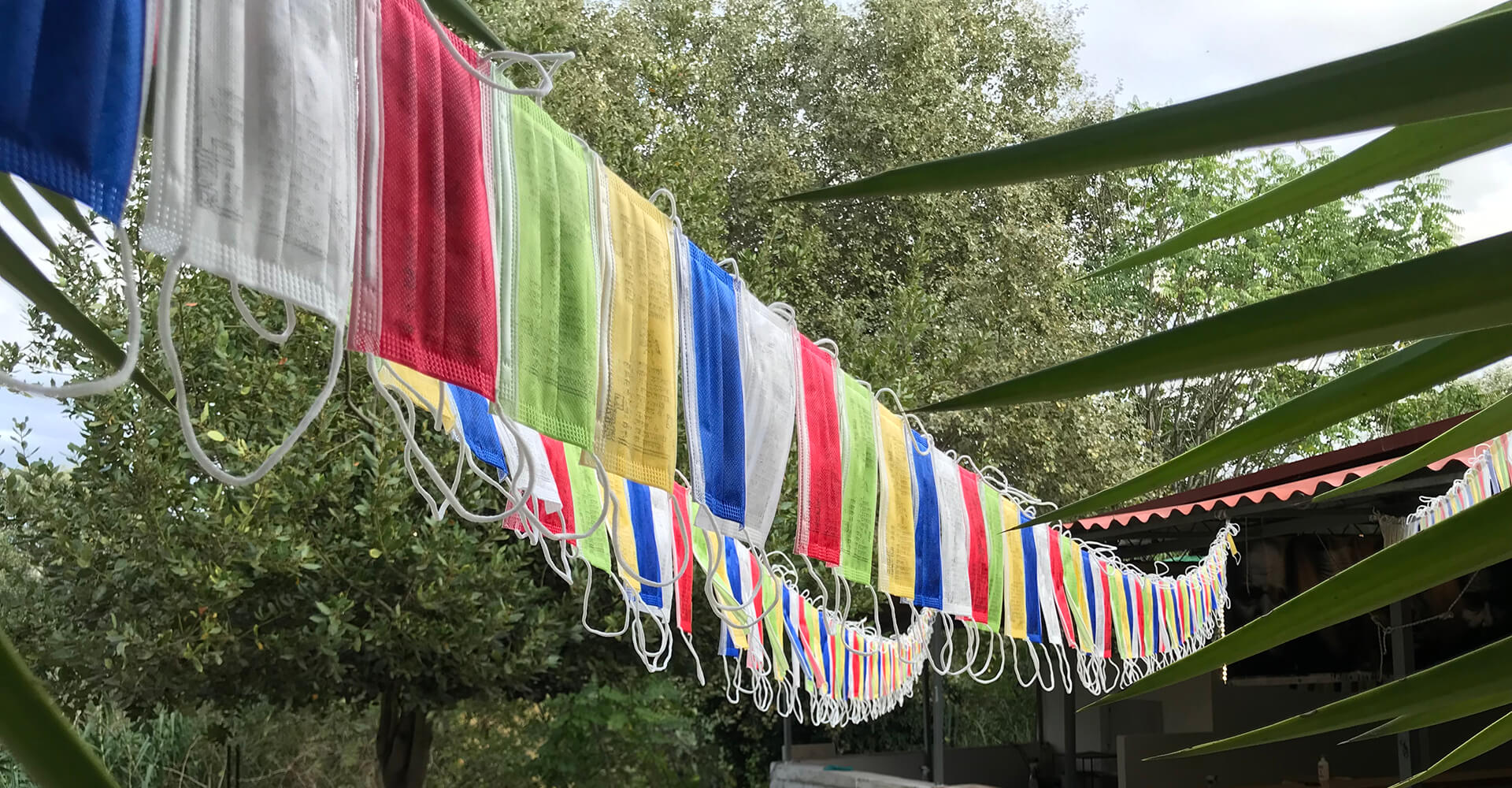

The LUNG-TA Memorial project is a site-specific installation at T.A.G. for Il Cadavere Squisito # 21, and is a memorial for the victims of the covid pandemic in the Rome Metropolitan area.
The prayer flags for the installation are made with surgical masks in the traditional colors of the lung-ta, joined in long lines, hanging from the beams on the ceiling of the exhibition space. In addition to occupying the interior spaces of the gallery, the installation extends to reach the exterior spaces of the Tevere Art Gallery.
The masks/lung-ta, as for the Tibetan flags, are enriched with symbols and prayers, printed on each mask manually by means of a stamp expressly made for the project.
The number of flags used for the installation is not accidental, but compared to the real number of victims of the pandemic in the Rome Metropolitan area, a number which, unfortunately, continues to increase every day.
In the week in which the project was presented, the number of covid deaths had reached over 130,000 victims at national level, and over 8,600 victims in Lazio, of which about 70% in the Rome Metropolitan Area, over 6,000 deaths (data for Rome are not easy to find and have been approximated to carry out the project). Covid victim monitoring site (national and by region) at this link. Since then, sadly, the number of victims of the pandemic has still risen.
Despite the fact that the approach to the memorial is symbolic, the conceptual rigor that animates the creative production has led to taking these numbers into close consideration. The final sizing of the work also depended on the measurements of the exhibition space and other assessments relating to the installation set-up.
LUNG-TA Memorial, the memorial installation for the covid victims of the Metropolitan Area of Rome, uses 6,500 colored surgical masks, transformed into prayer flags.


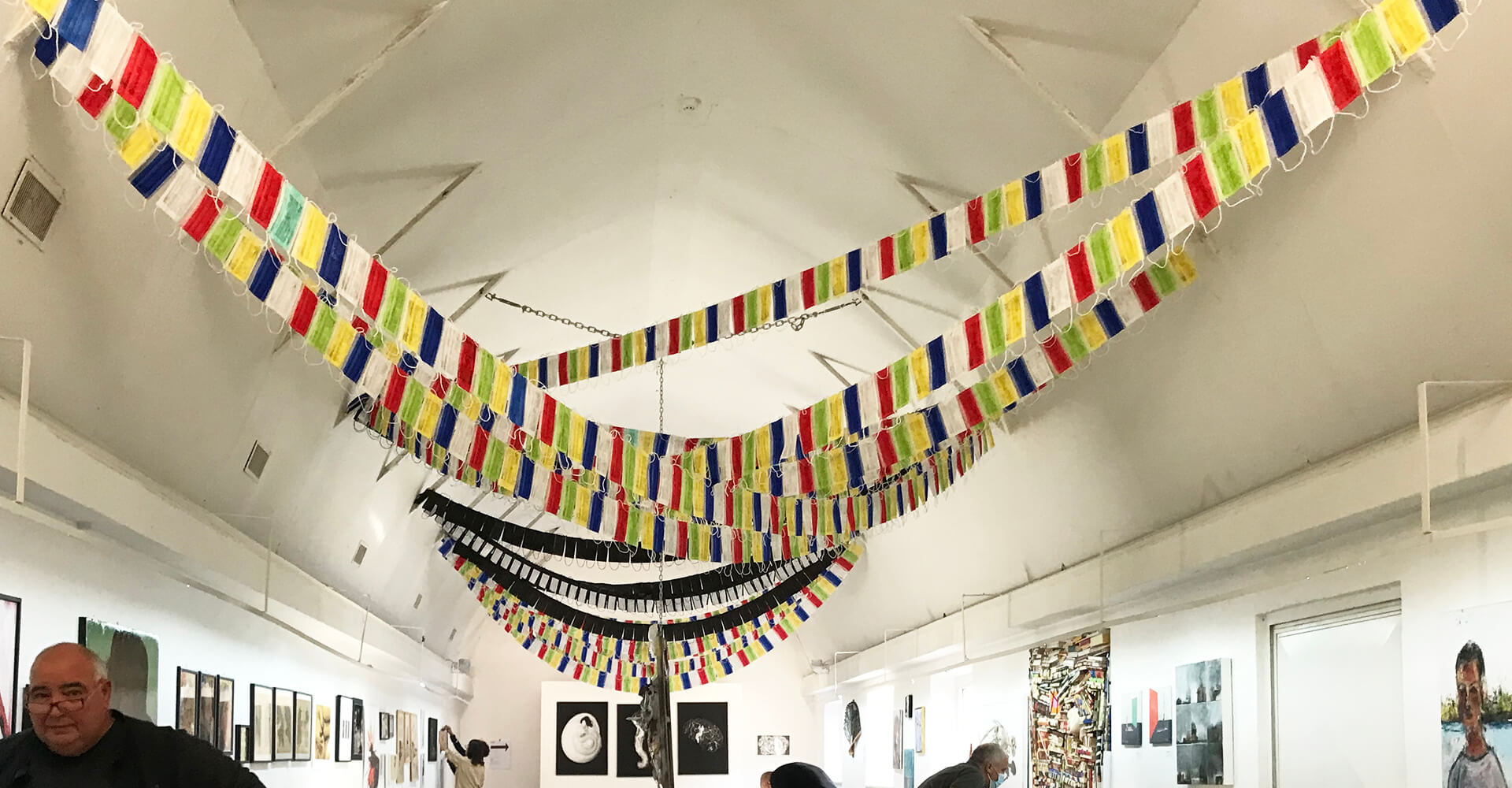
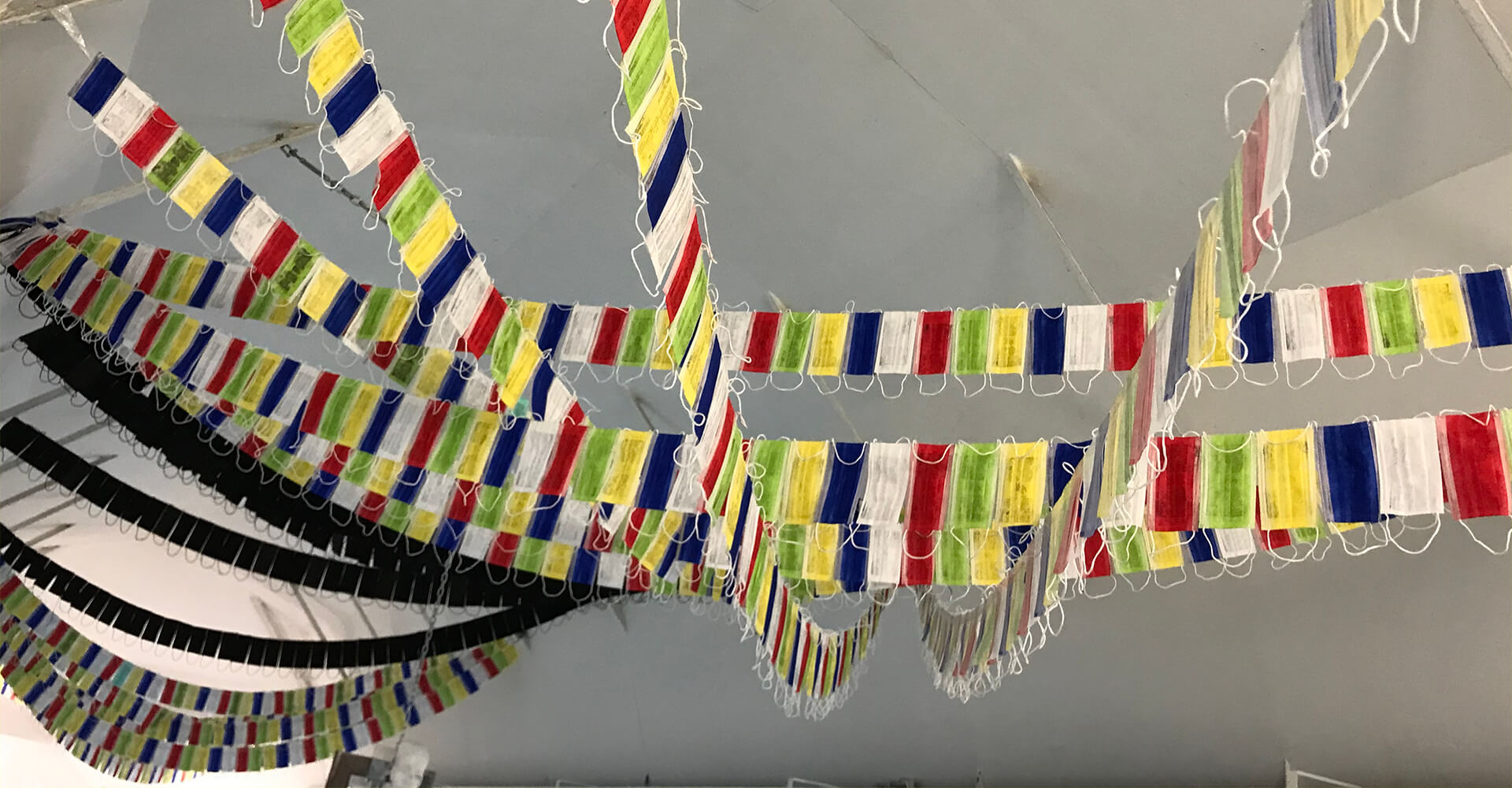
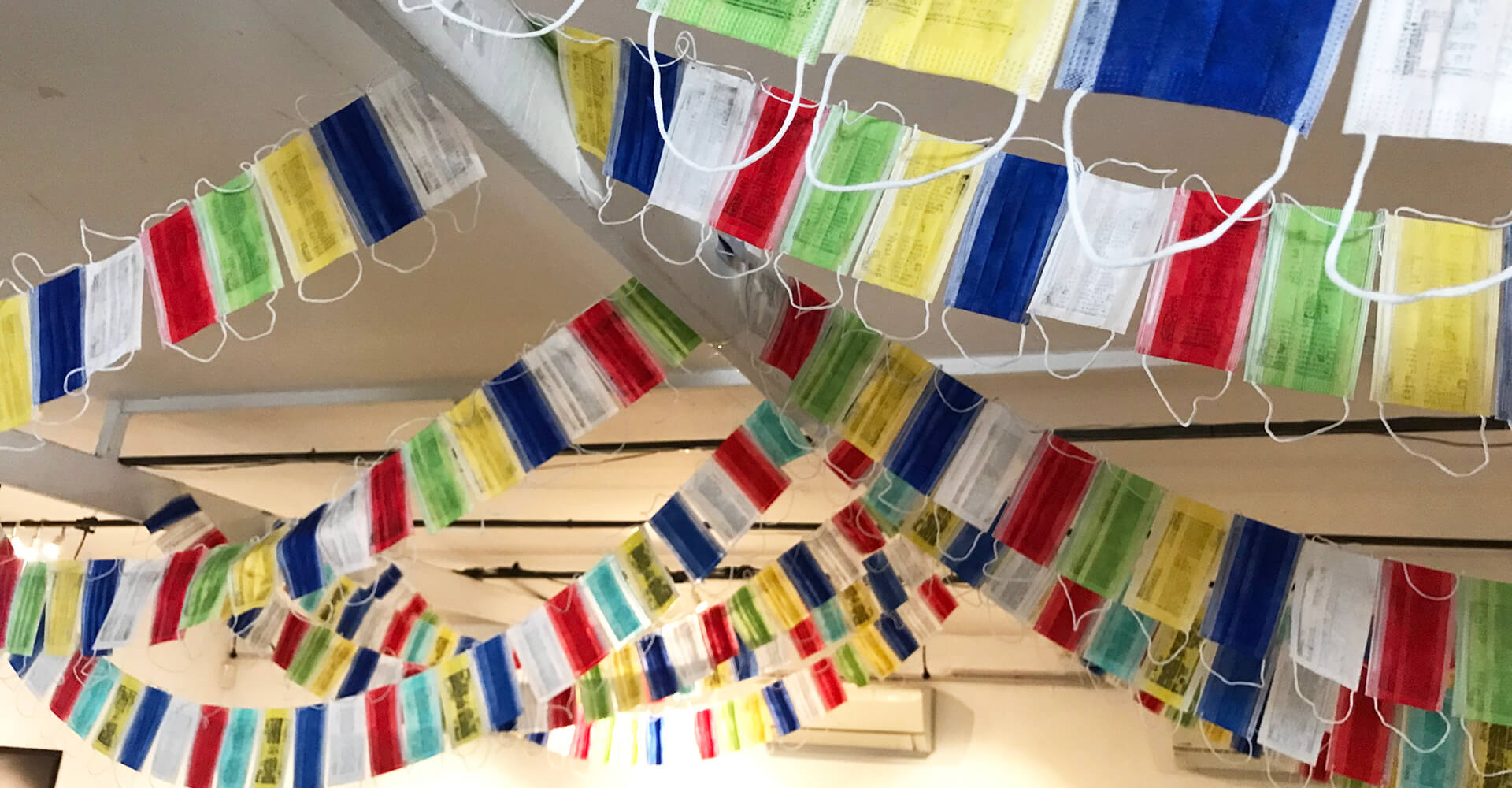
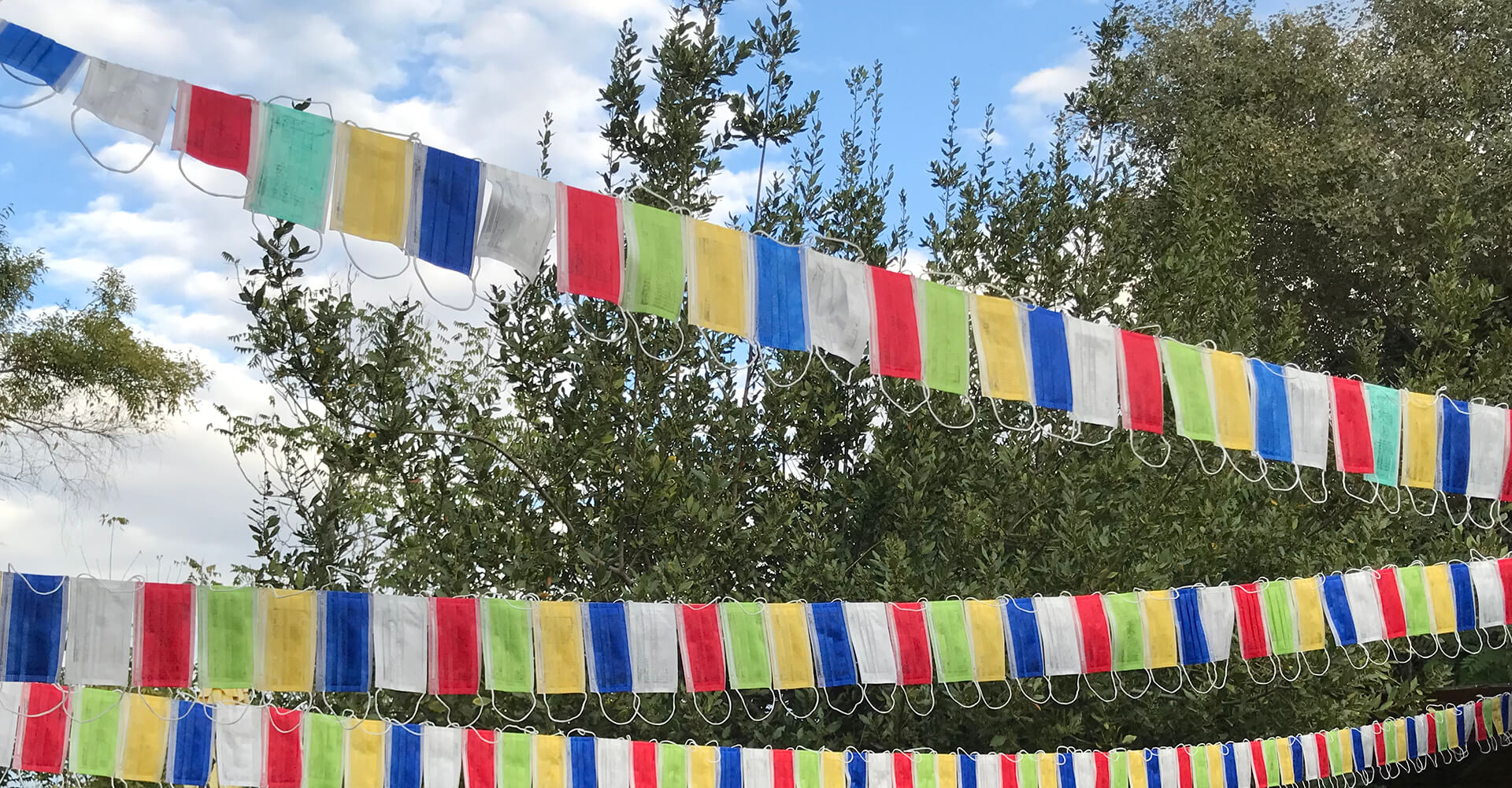
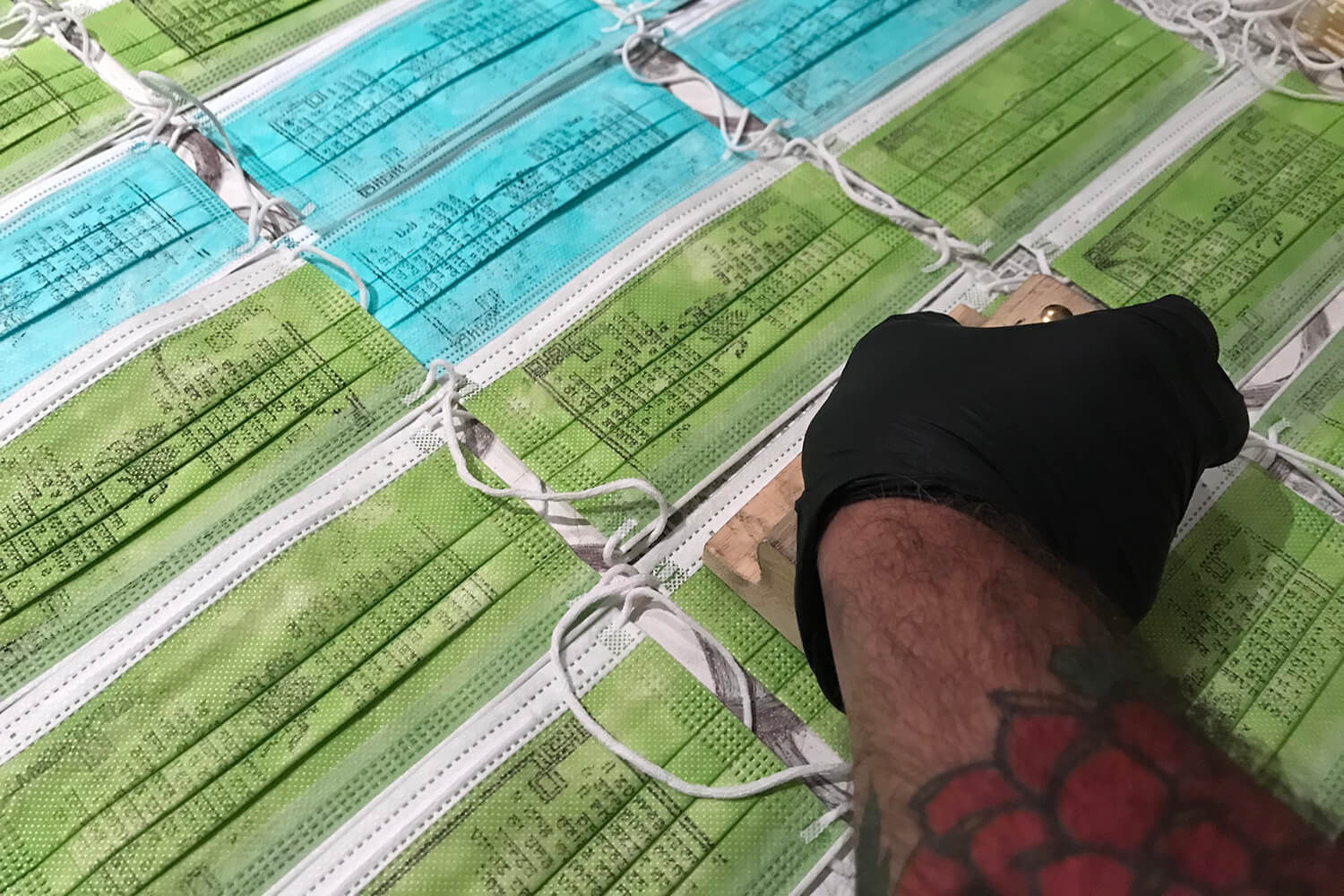
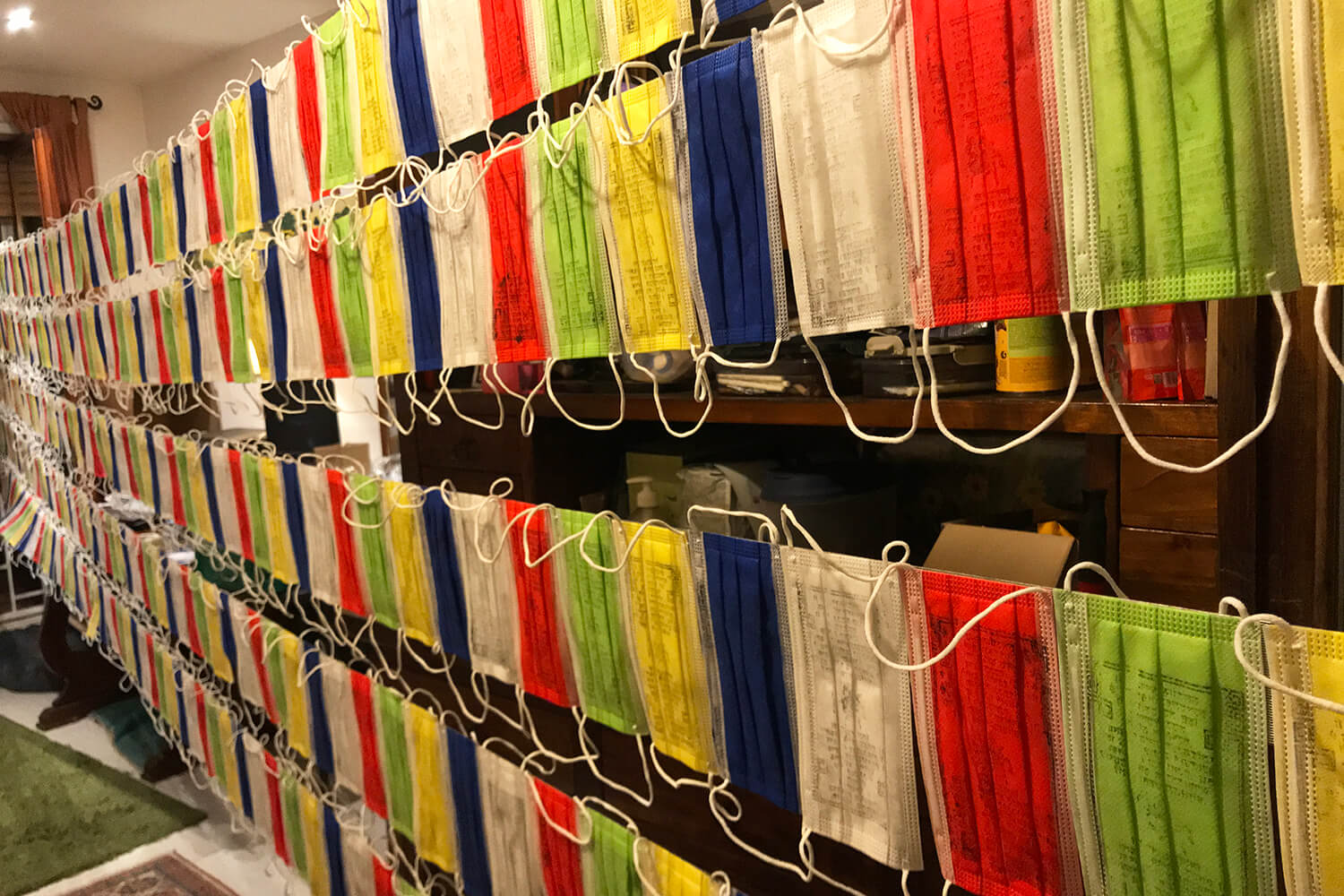
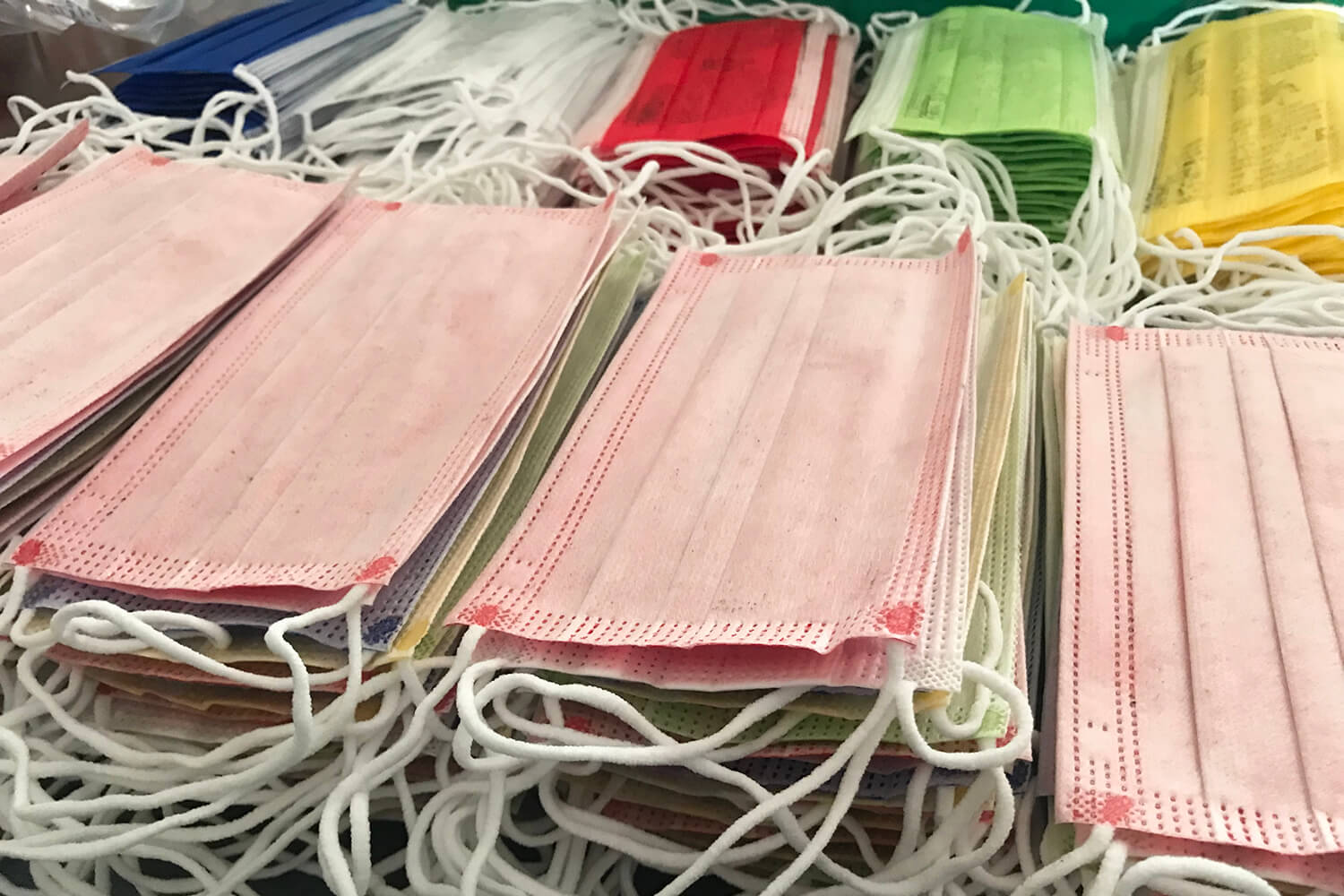
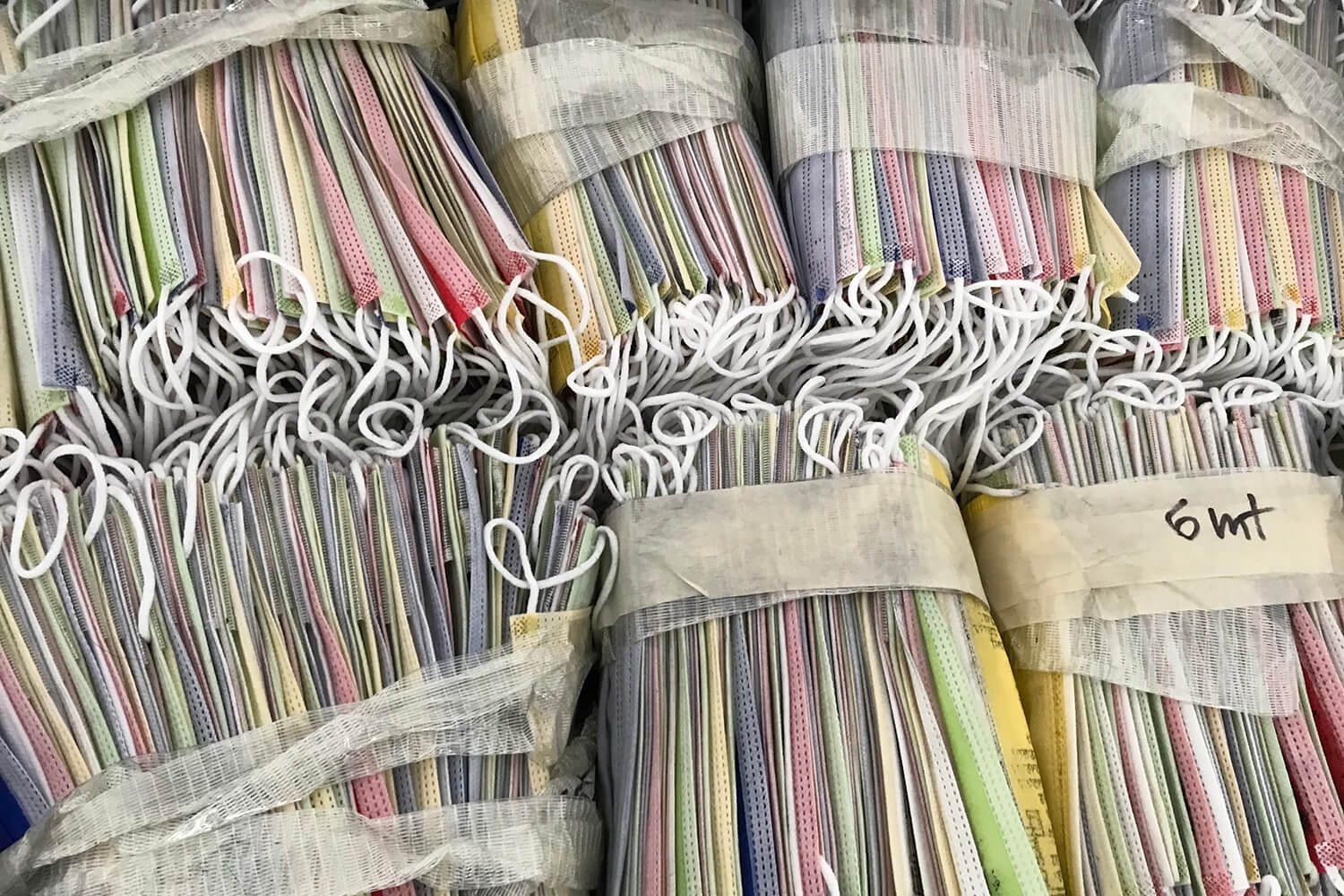
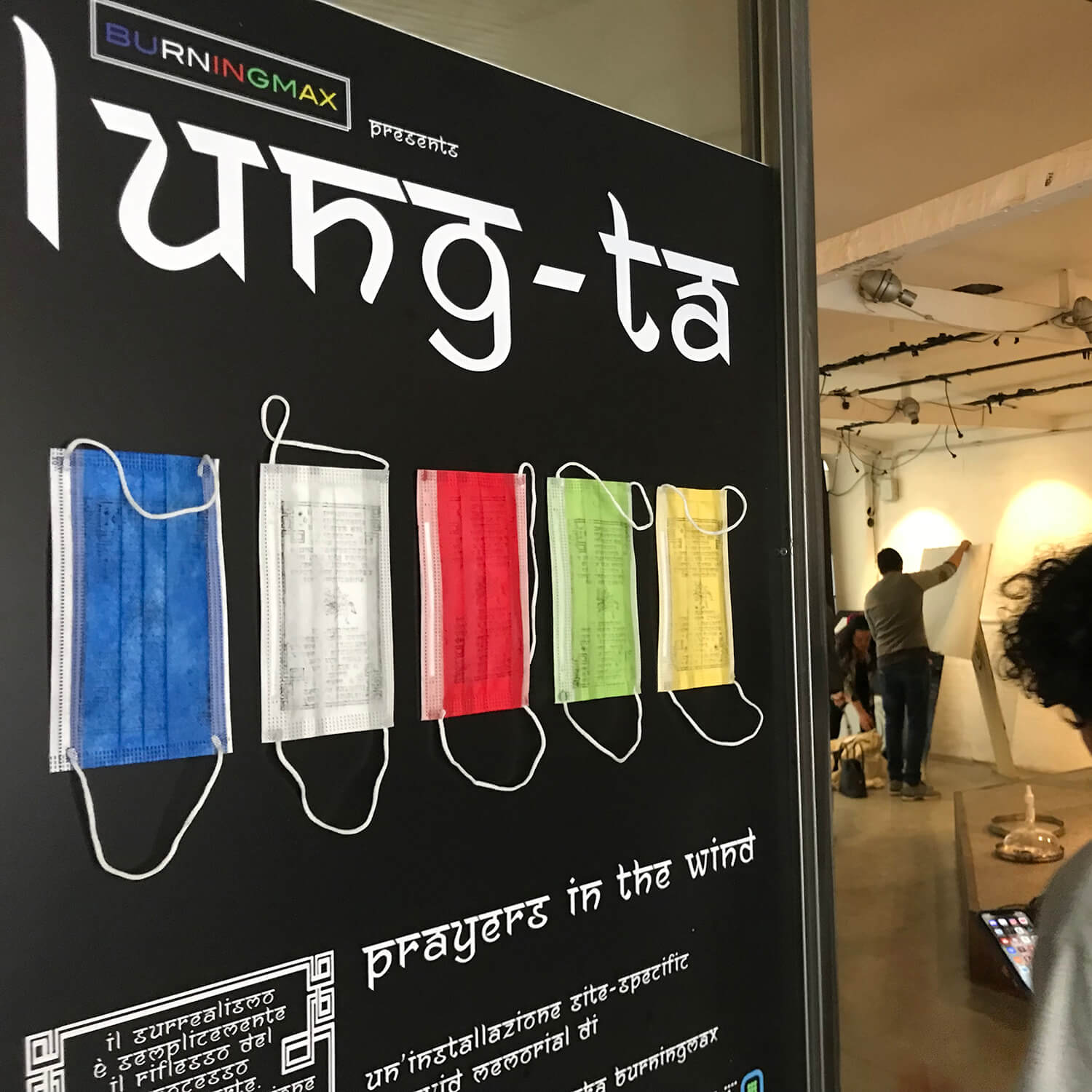
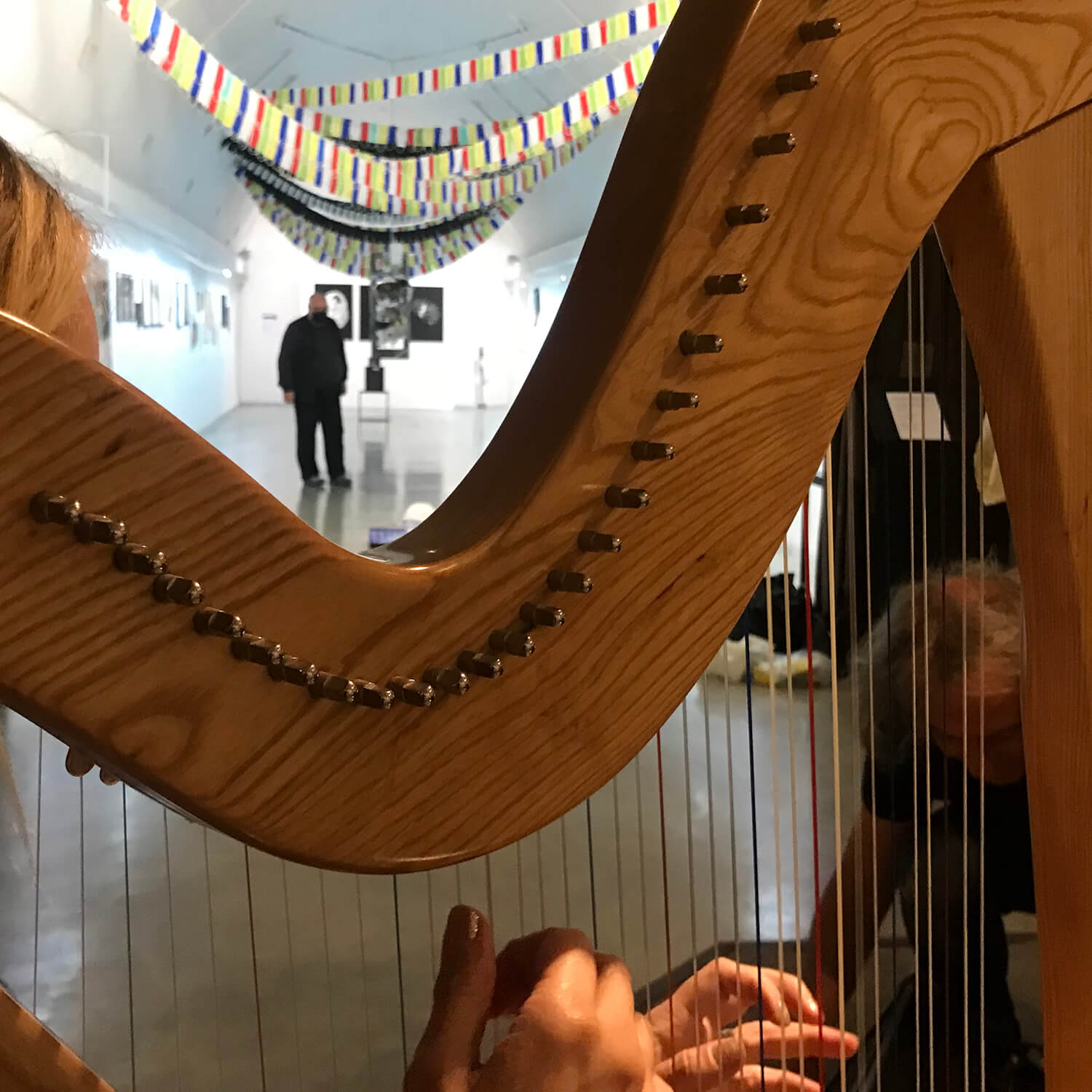

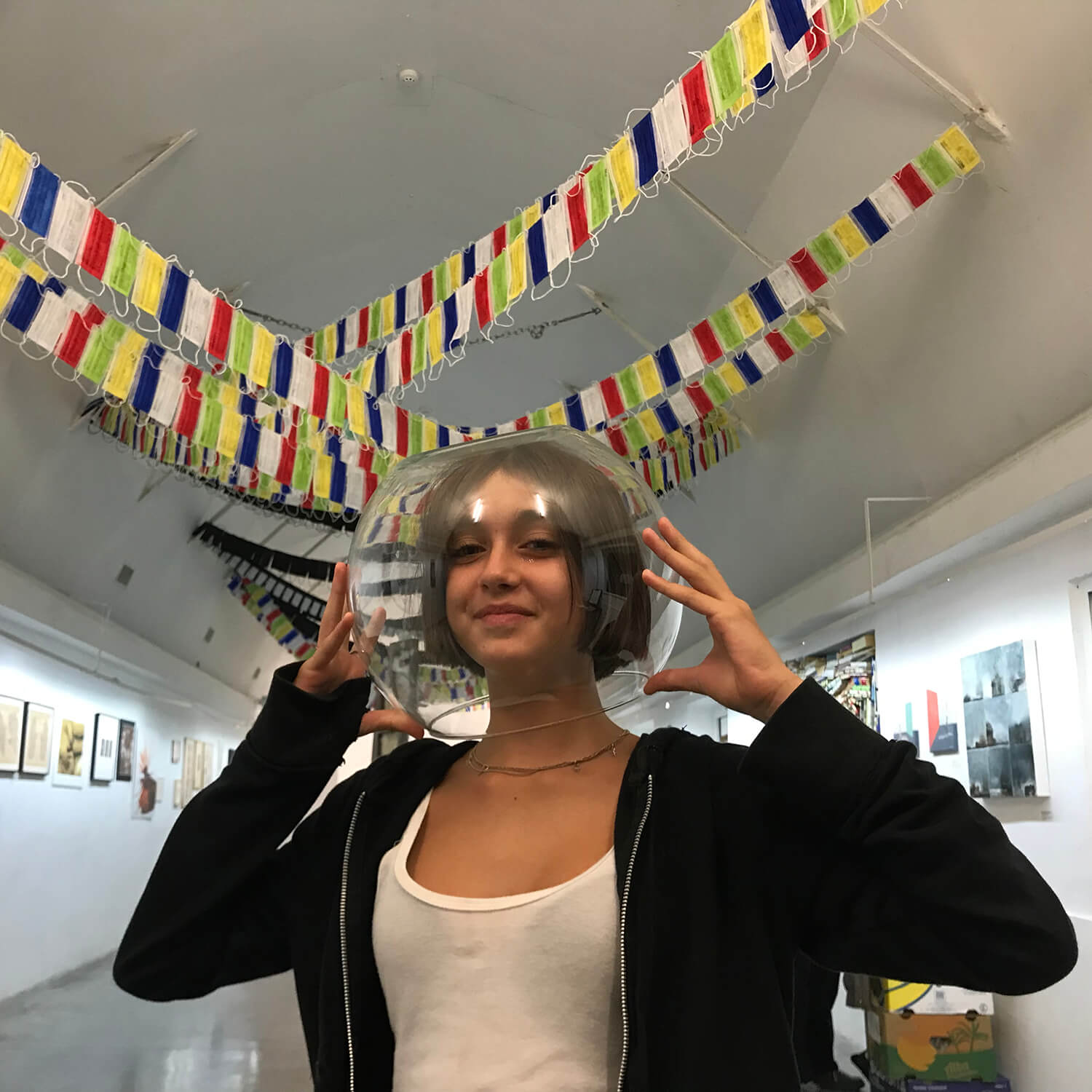
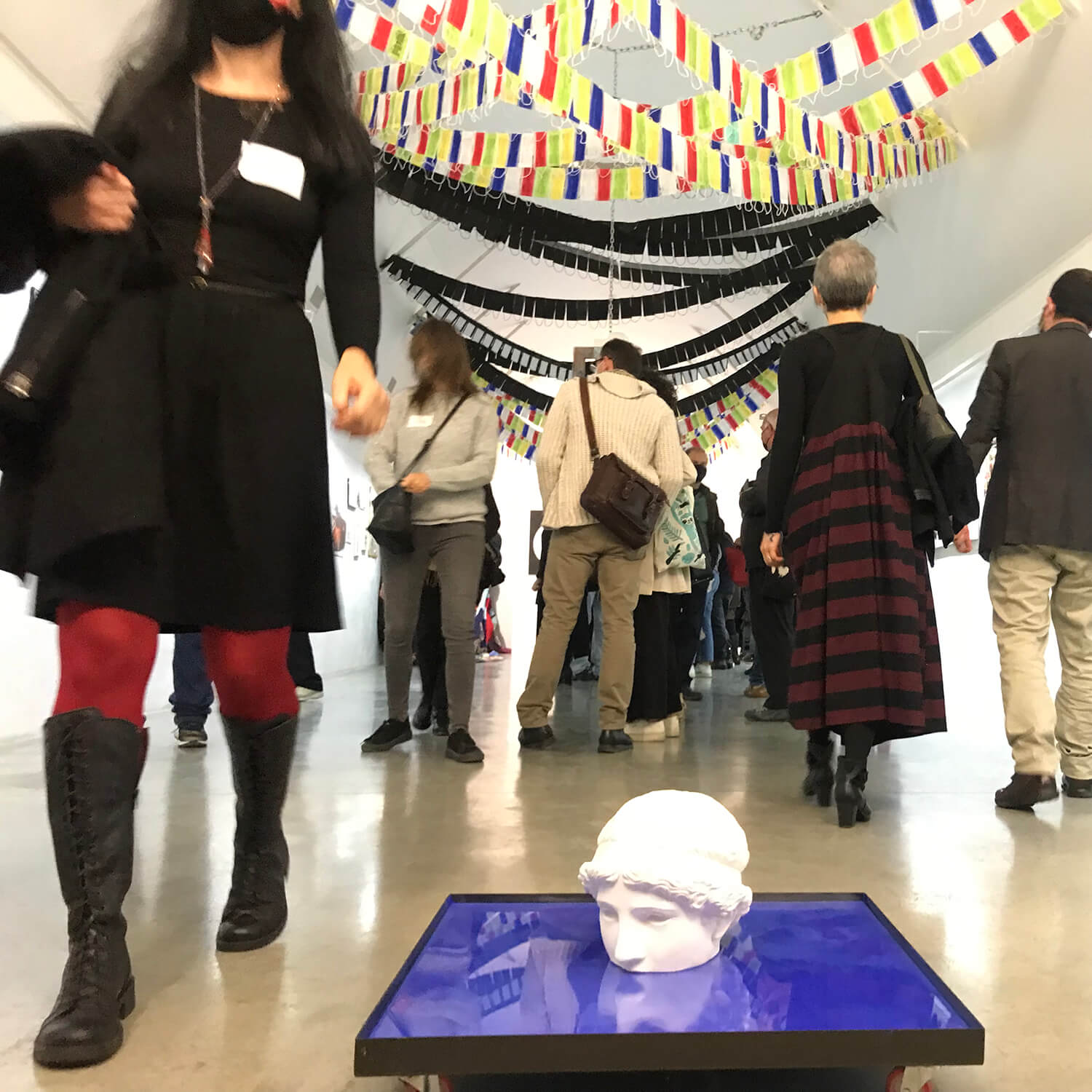
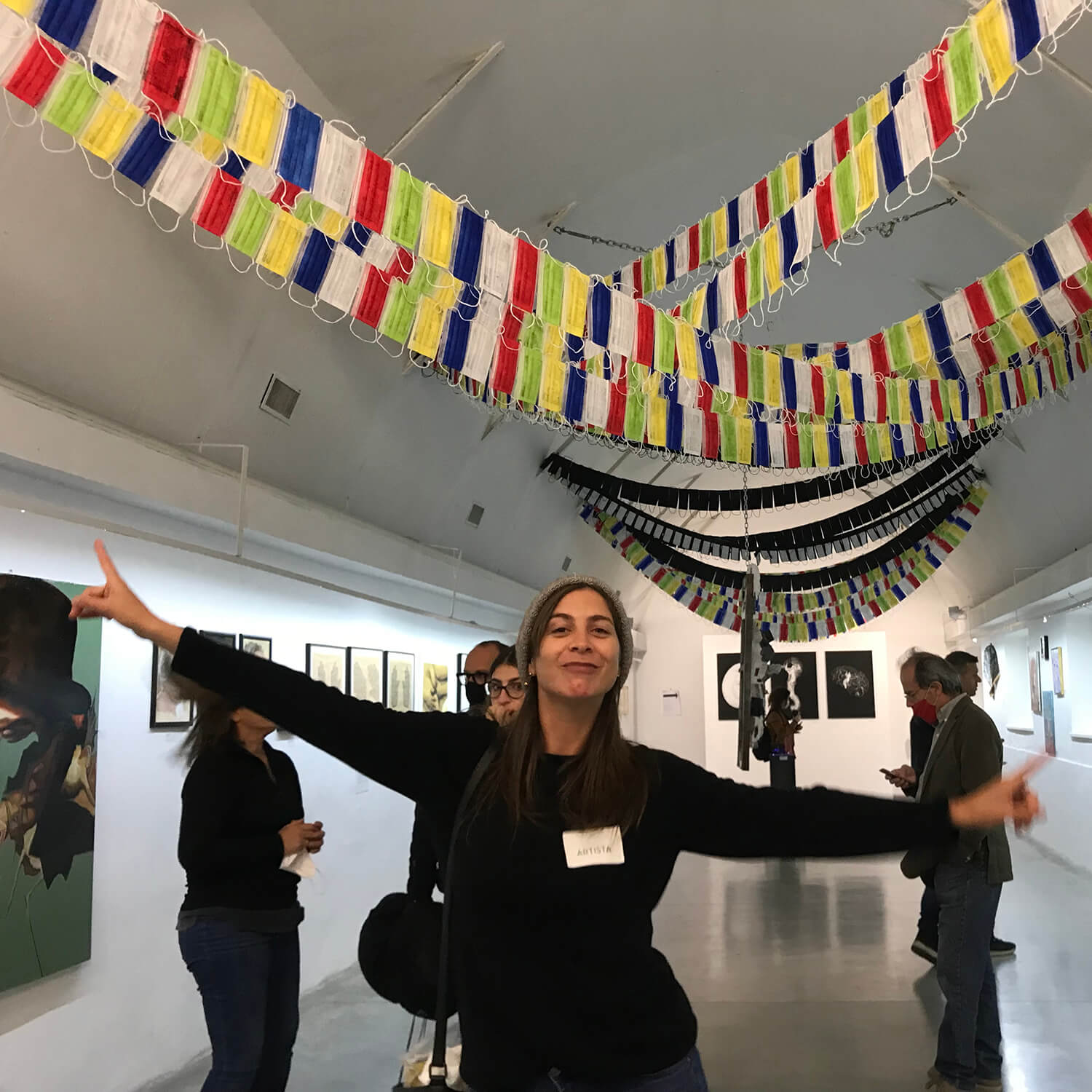

Apart from the main reference for the installation, the Tibetan prayer flags, there are several personal creative references to which Burningmax was inspired for the creation of the LUNG-TA project.
The first reference, relating to the “memorial” aspect, is that of the spiritual tradition of Burning Man Temples, whose construction Burningmax has participated in on several occasions, with particular mention for Temple of Transition in Black Rock City (2011).
The aspect of “repetitiveness of the action” necessary to work with thousands of masks/lung-ta is also part of the classic creative process of Burningmax, started since the 90s with the creation of various works and installations made with thousands by post-it notes, which has always been approached with the rituality of a mantra.
The fragmentation of the image of the stamps/mantras on the “pleated” surface of the surgical masks is also an approach that can be traced back to many of the works made with the same post-its, since Burningmax has often printed, written or painted on such layered surfaces, playing with the fragmentation of images and texts on “walls” made out of hundreds and thousands of yellow “sticky notes”.
Some images are shown below for reference, but for further information, especially on post-it art works, please check Burningmax official site.
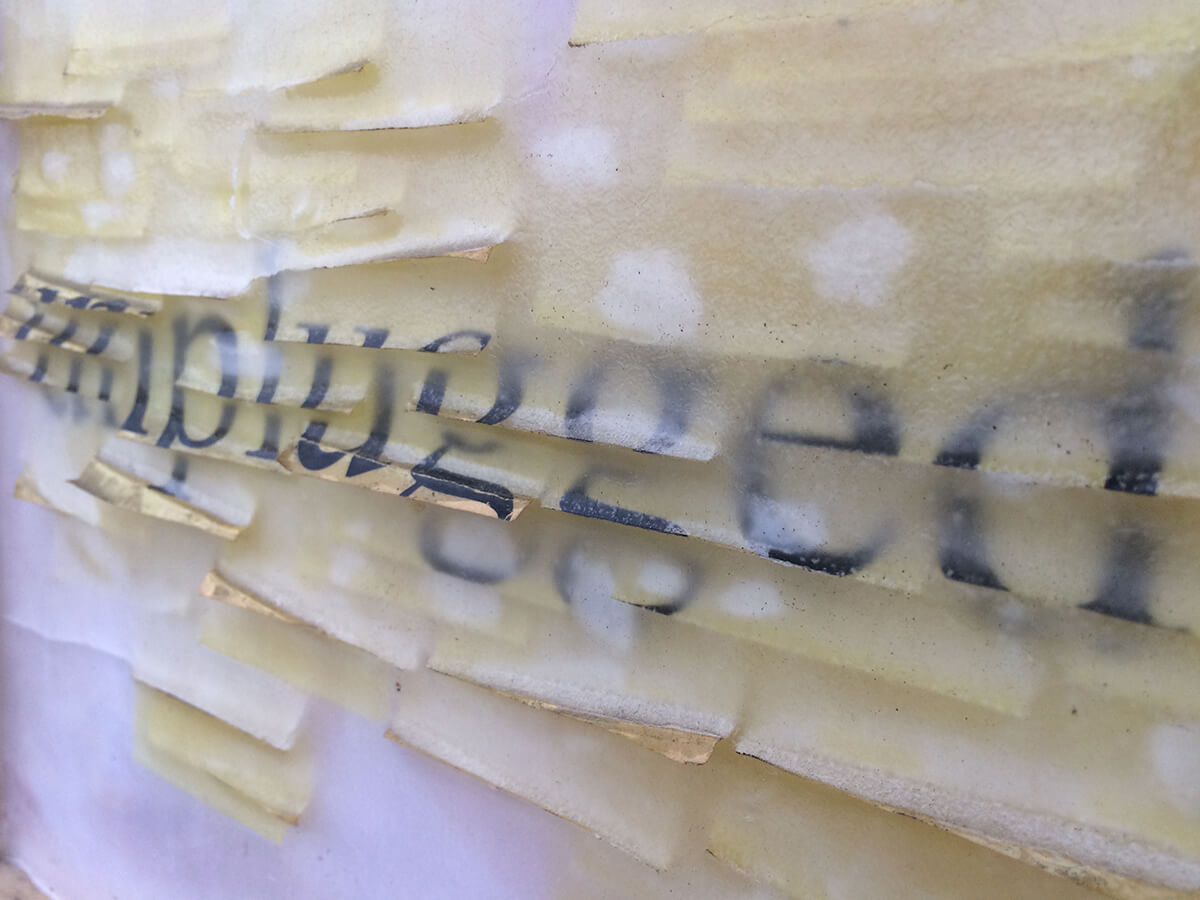
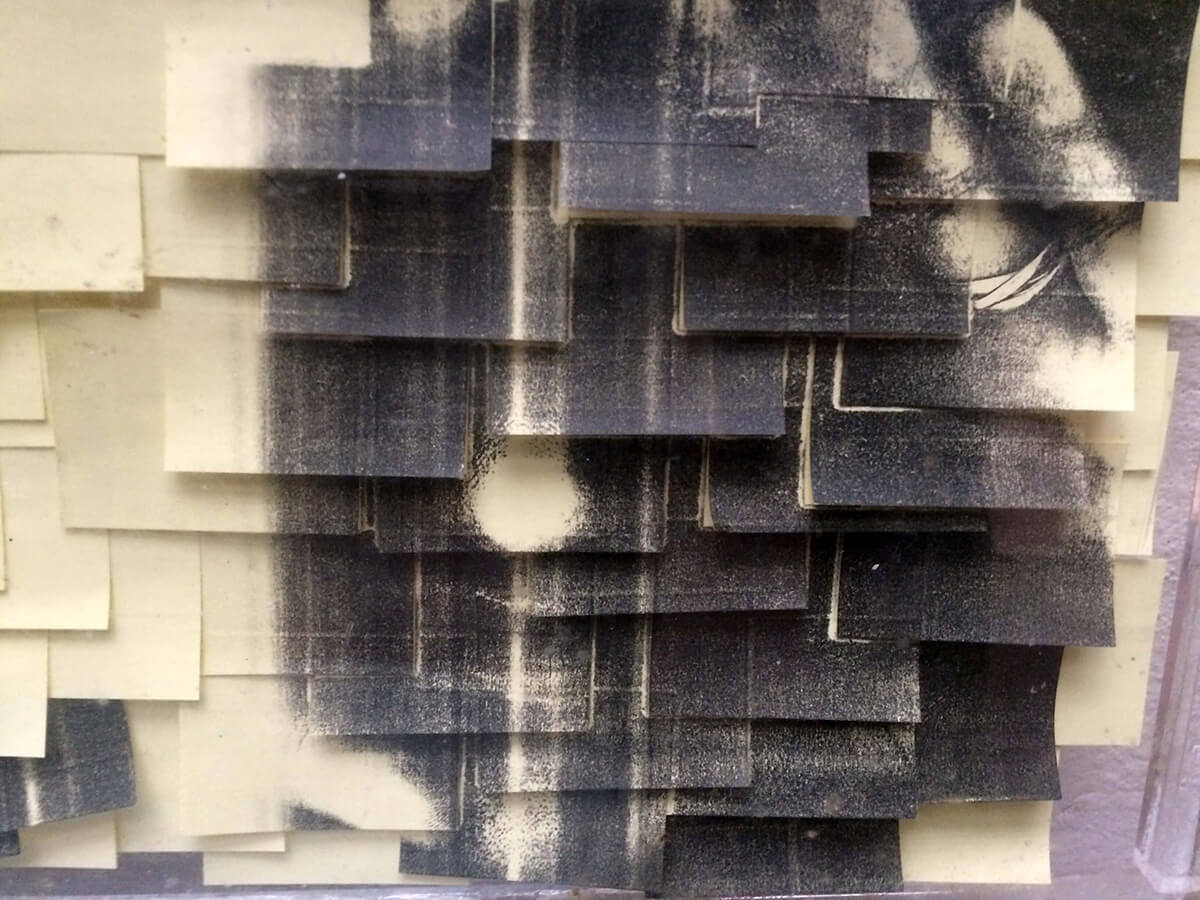
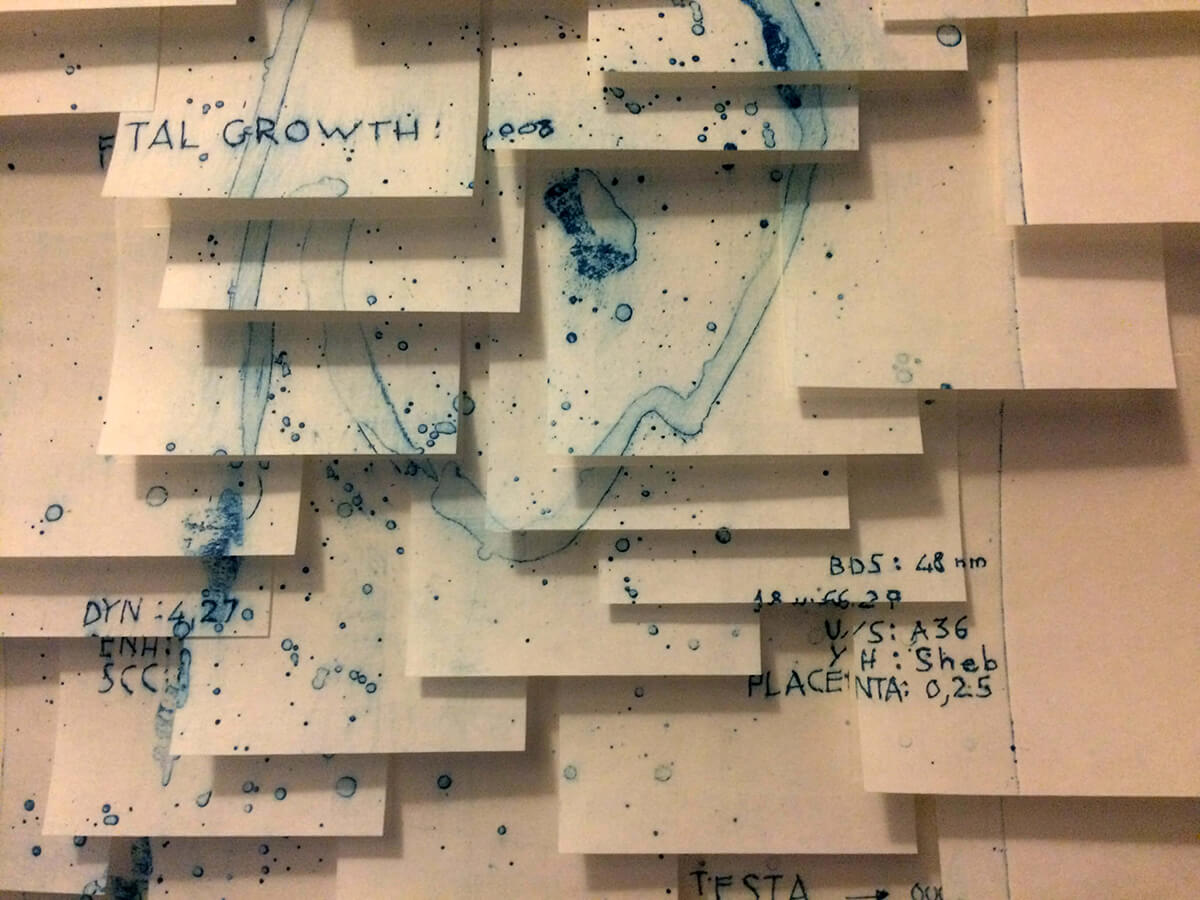
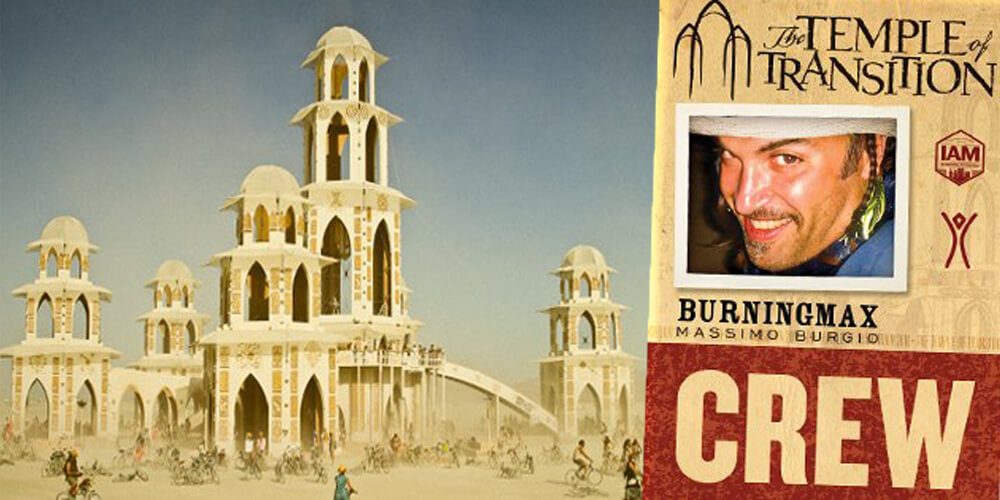
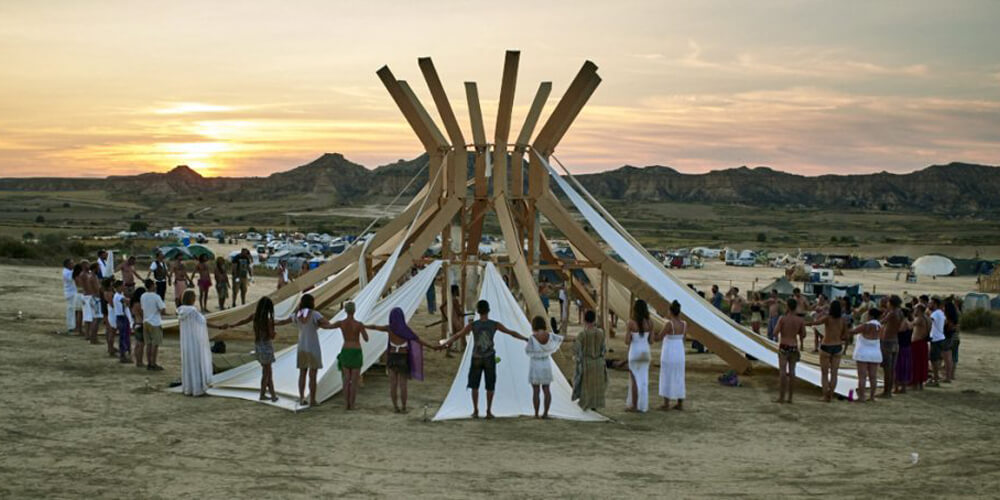
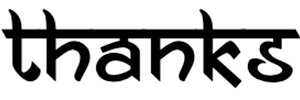
The LUNG-TA project is entirely funded by the artist, but benefits from an “art grant” to cover partial costs, generously offered by Nowhere Art Team (the artist support team of the official European Burning Man gathering). Thank you Nowhere Art Team.
Other thanks obviously go to the managers of the Tevere Art Gallery, for having received me with great sympathy and extreme availability, and to the curators of the series “Il Cadavere Squisito“, for having enthusiastically accepted the project, and for having offered suggestions on several occasions both for the set-up of the installation and for its “future” as a street art intervention, when I had to cancel the “burn performance” for sustainability reasons. Thank you all, from my heart.
Finally, other thanks go to some of the friends from the Roman burner community who supported me in various phases of the project, from the simple but highly appreciated emotional support, to the concrete material support in some production stages. You know who you are. Burn on.

More biographical info and other Burningmax projects at the artist’s official website www.burningmax.com.
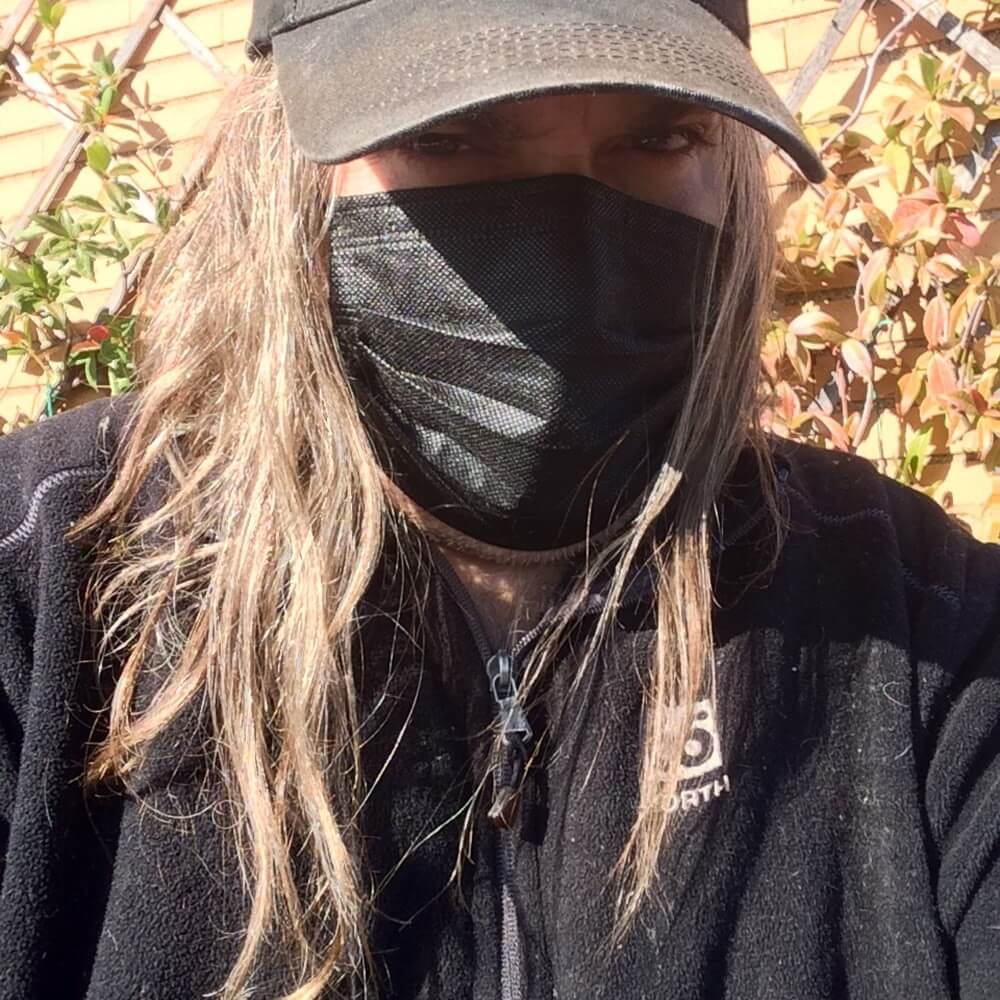

© Burningmax 2021
Website by Truly Social
